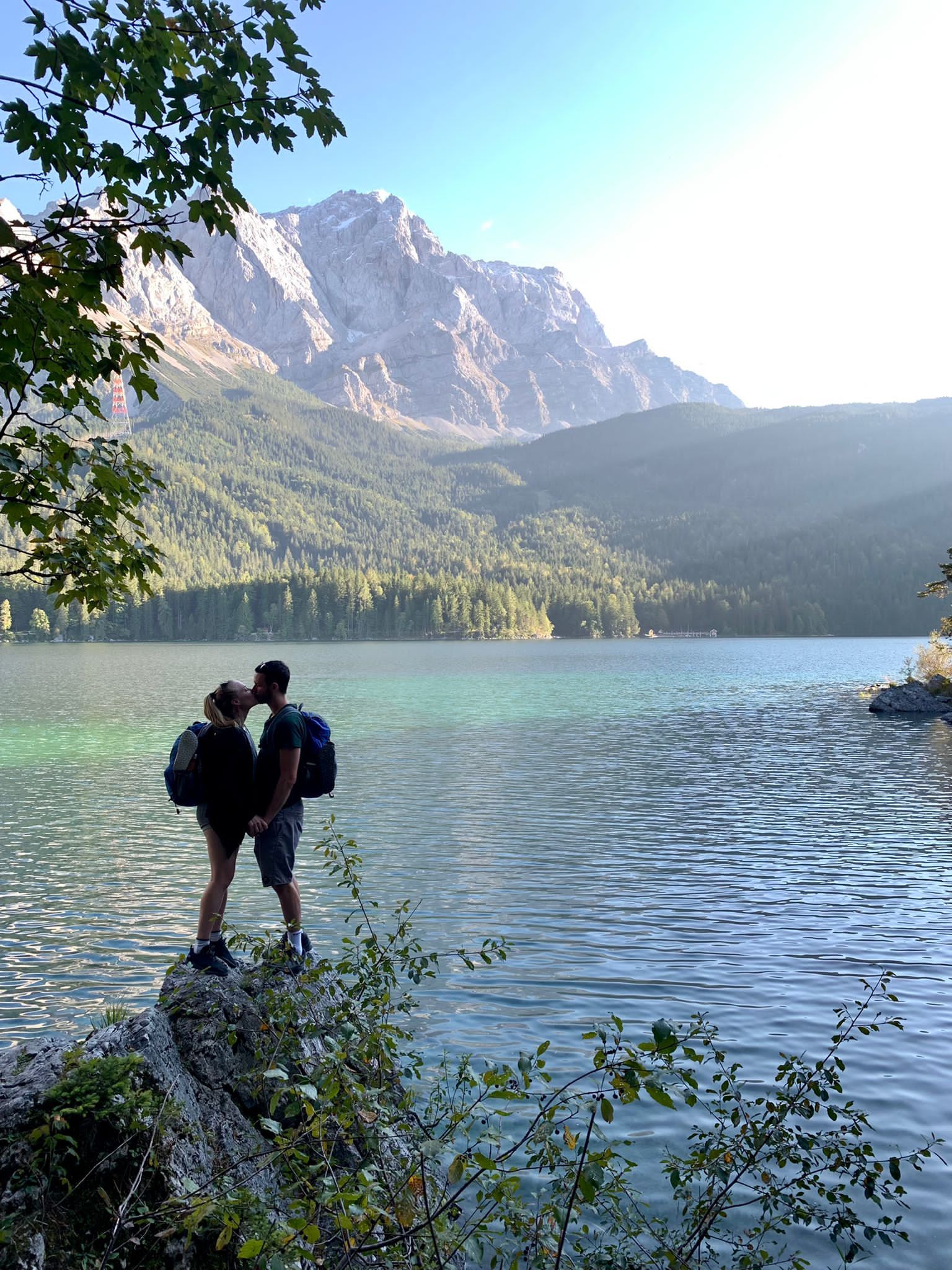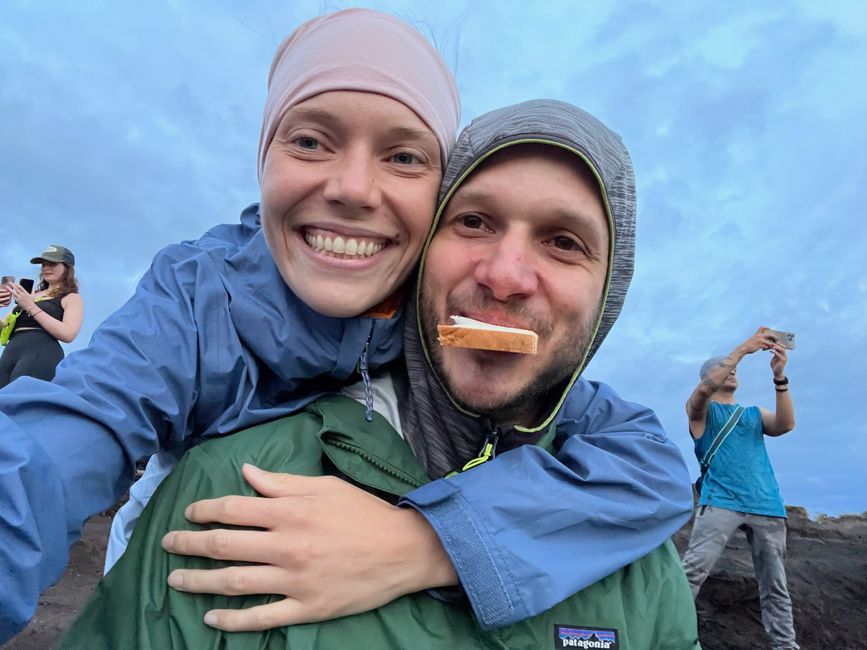
janas-und-philips-weltreise
vakantio.de/janas-und-philips-weltreise
Cusco
Atejade: 18.07.2023
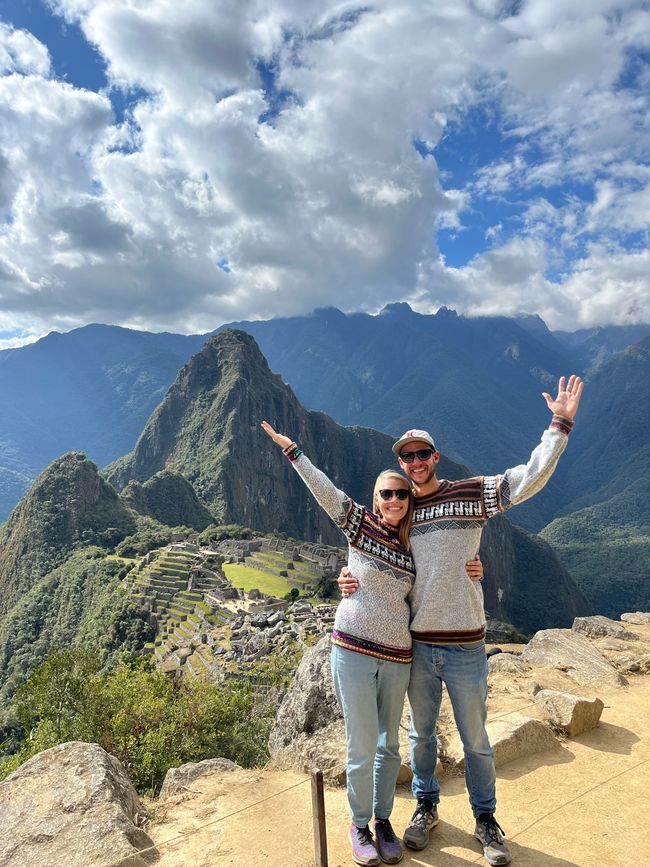
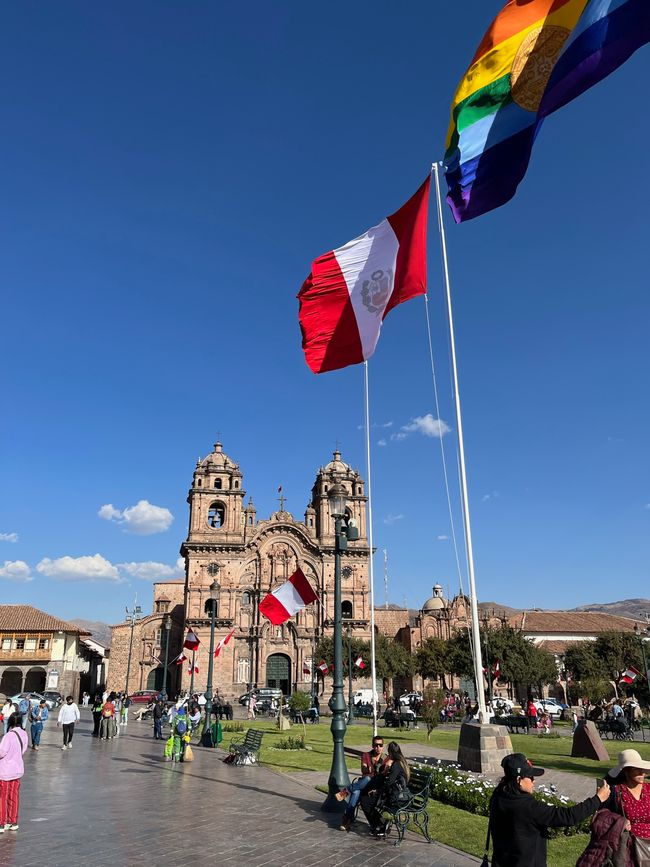
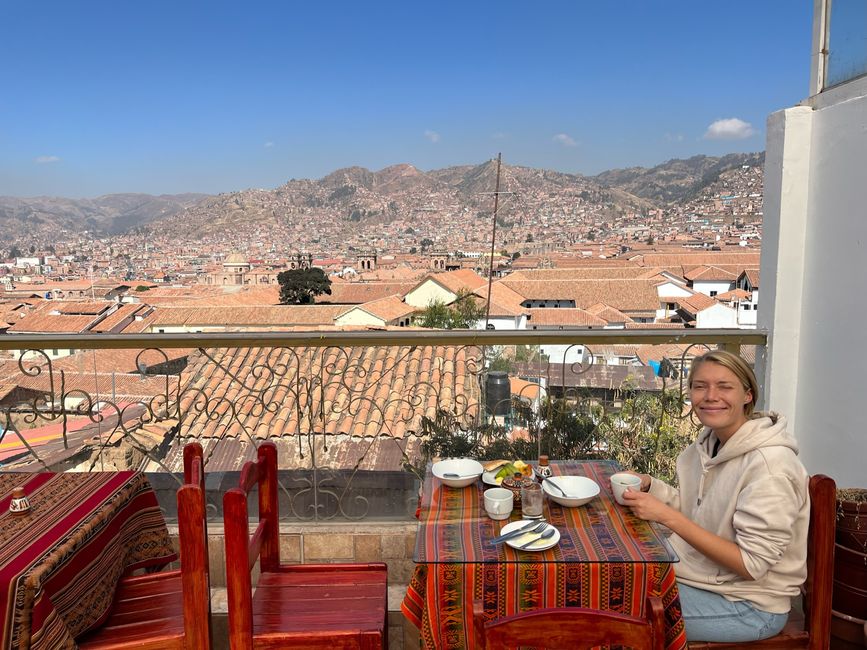
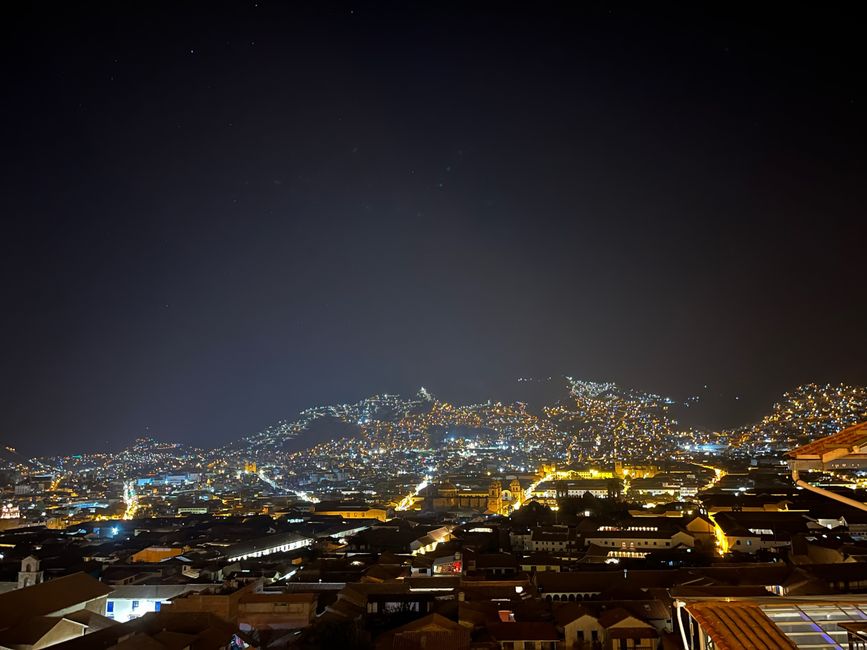
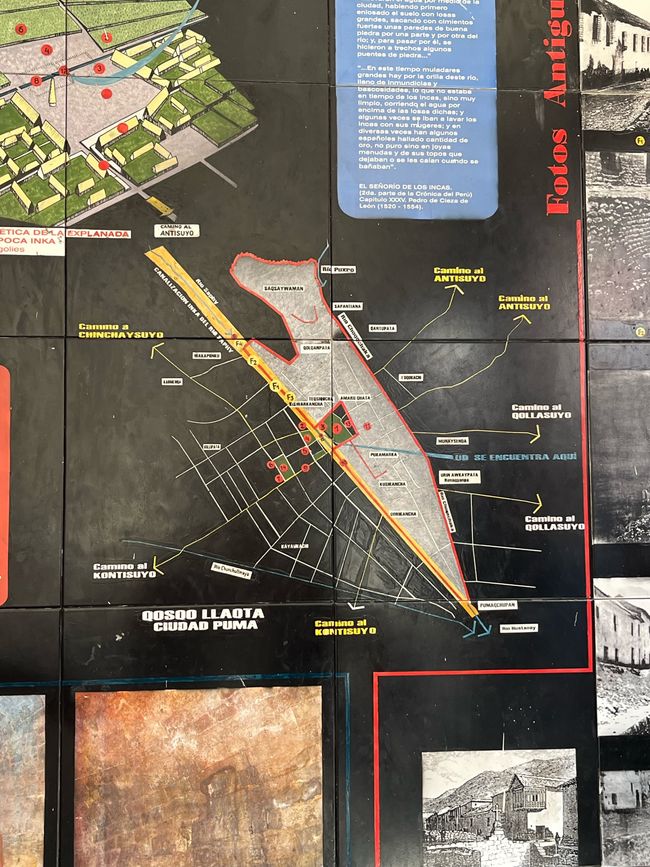
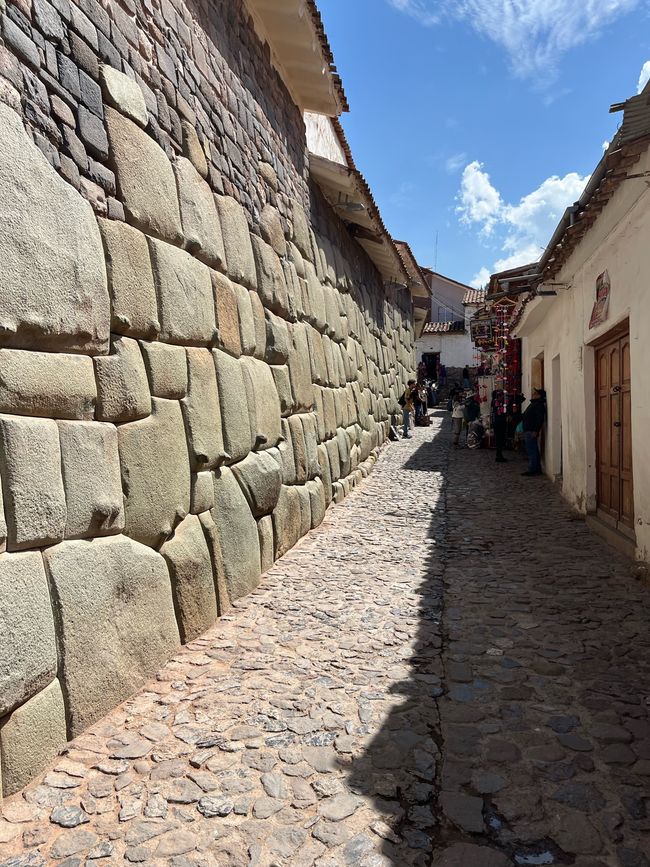
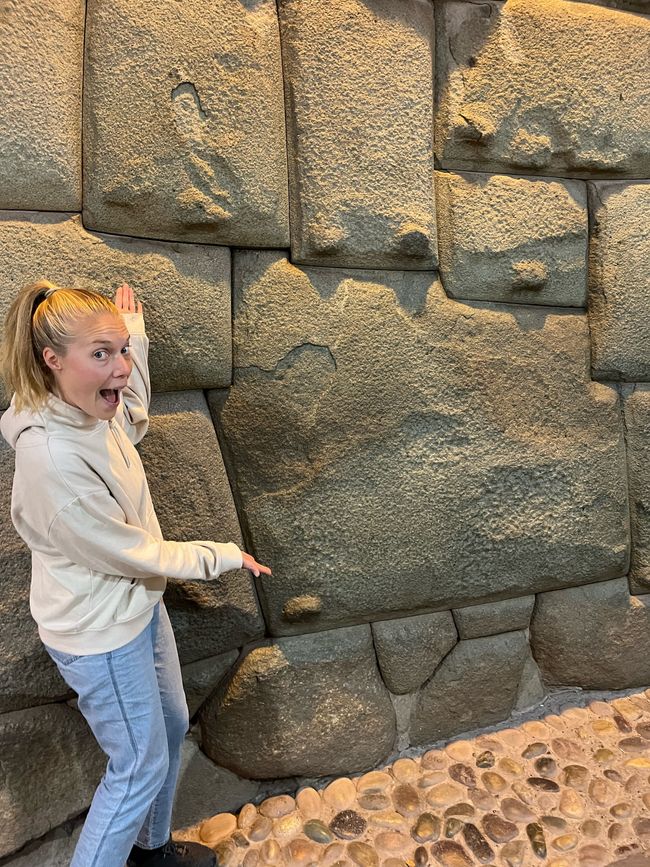
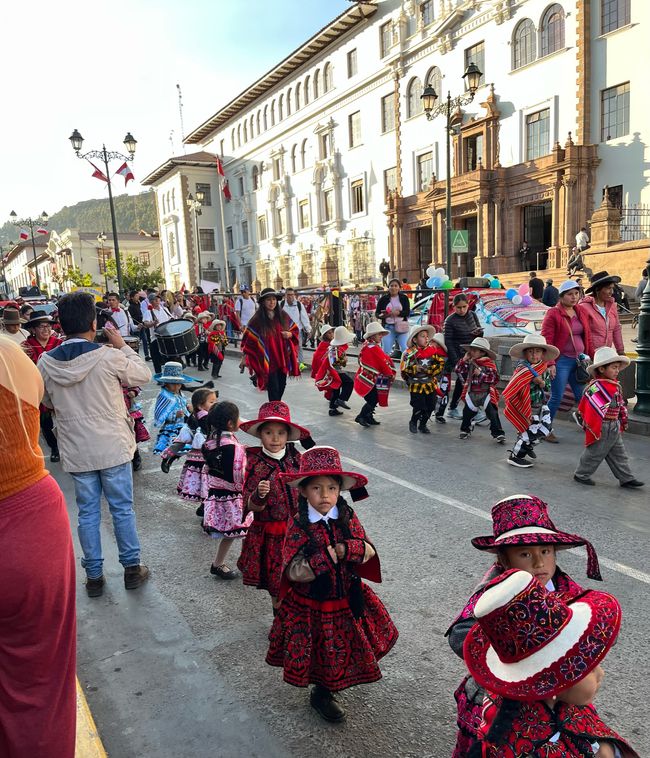
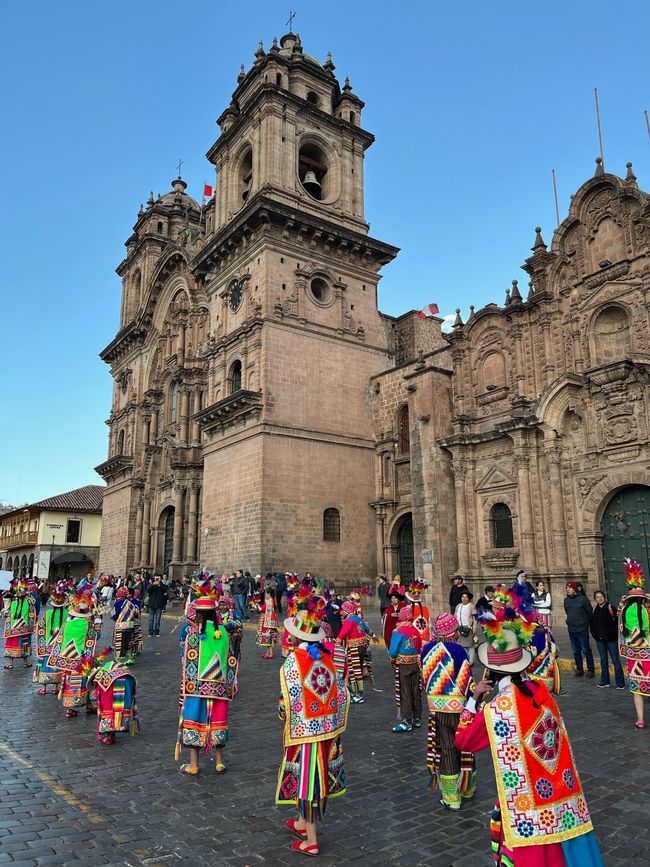
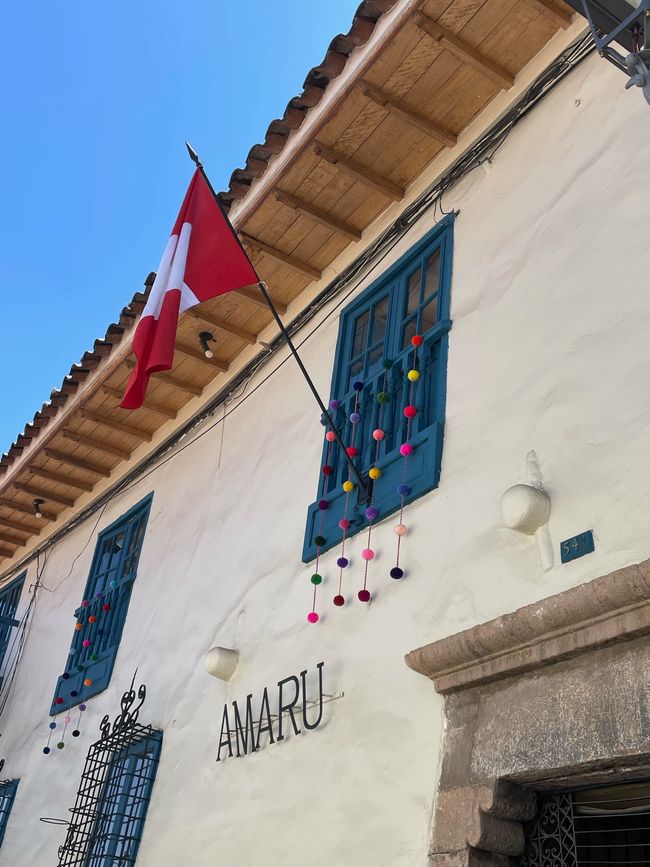
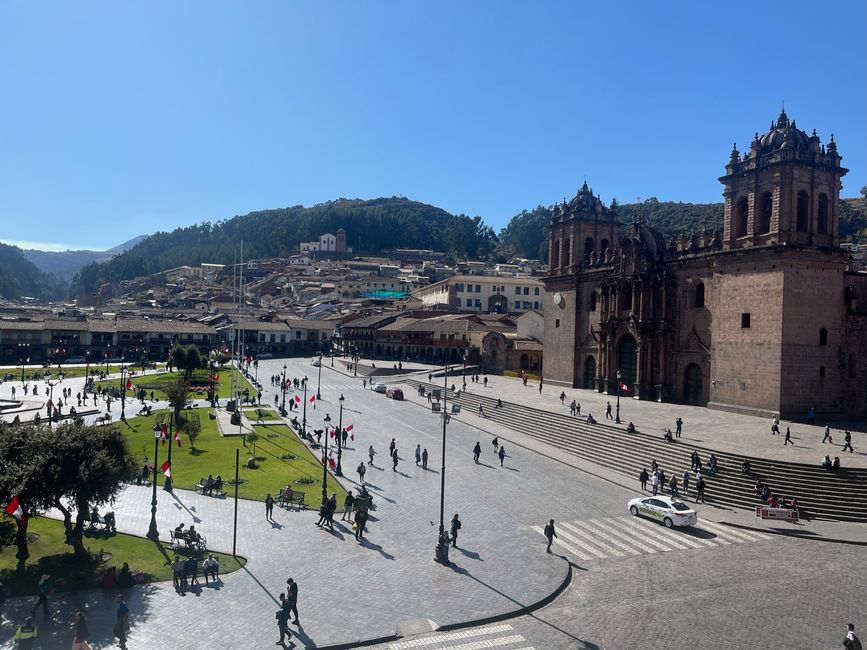
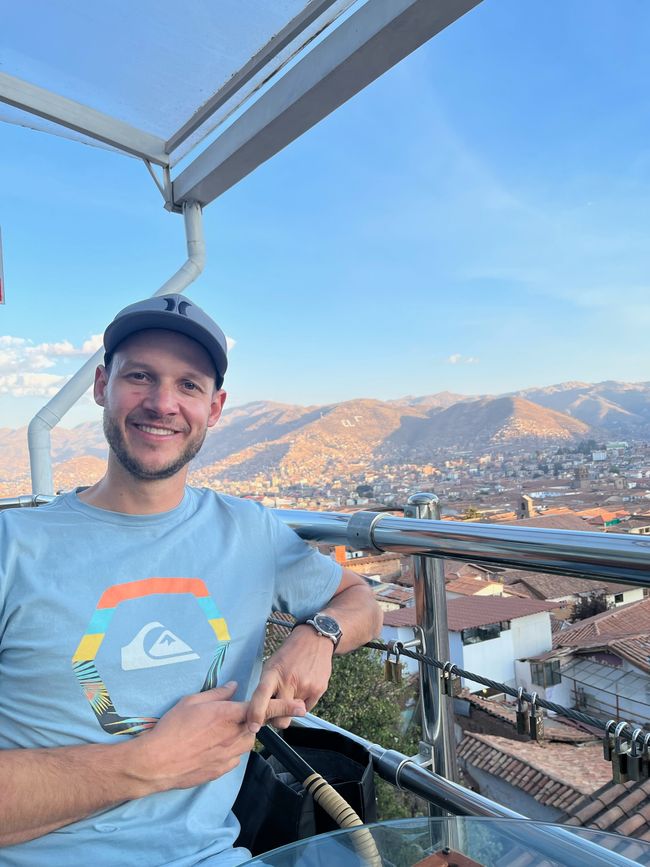
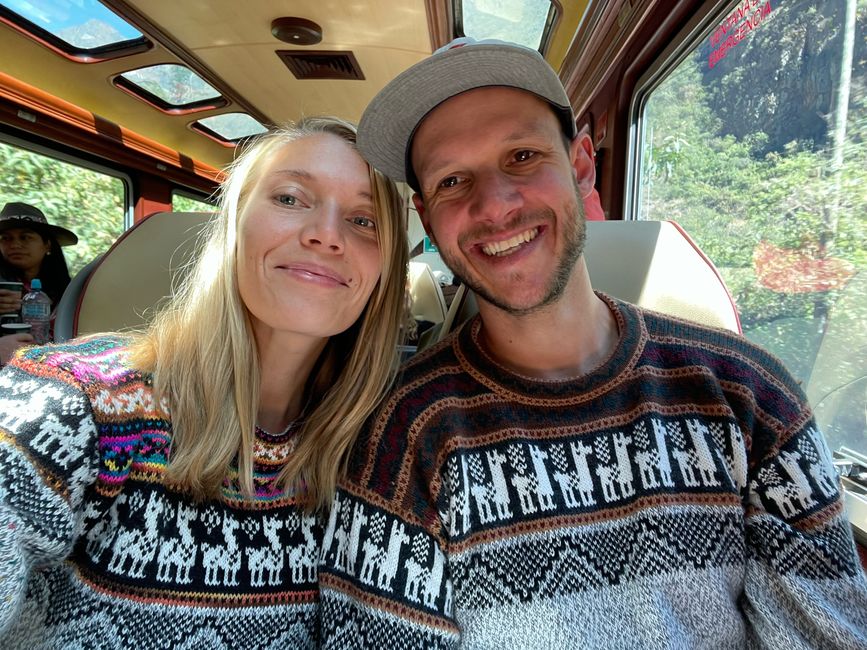
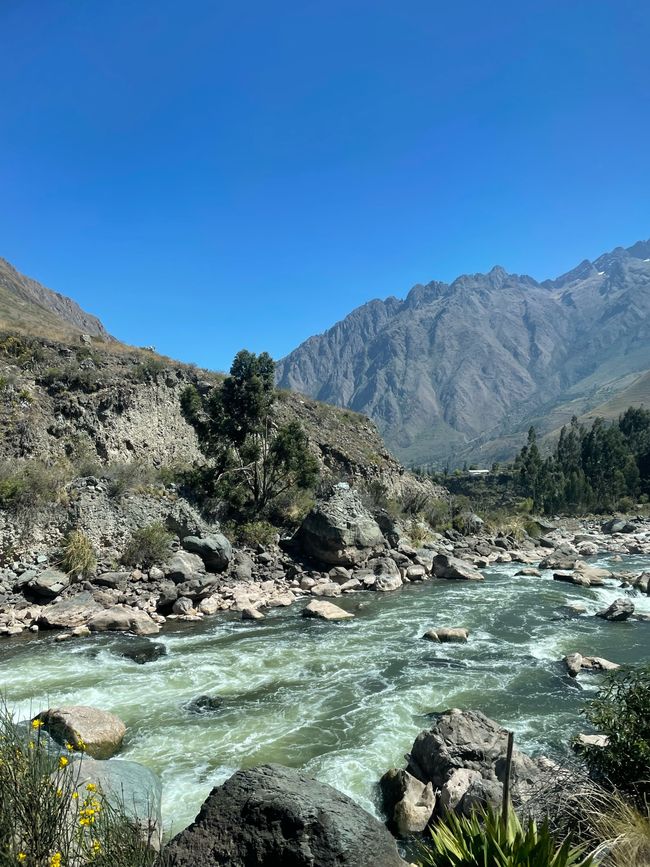
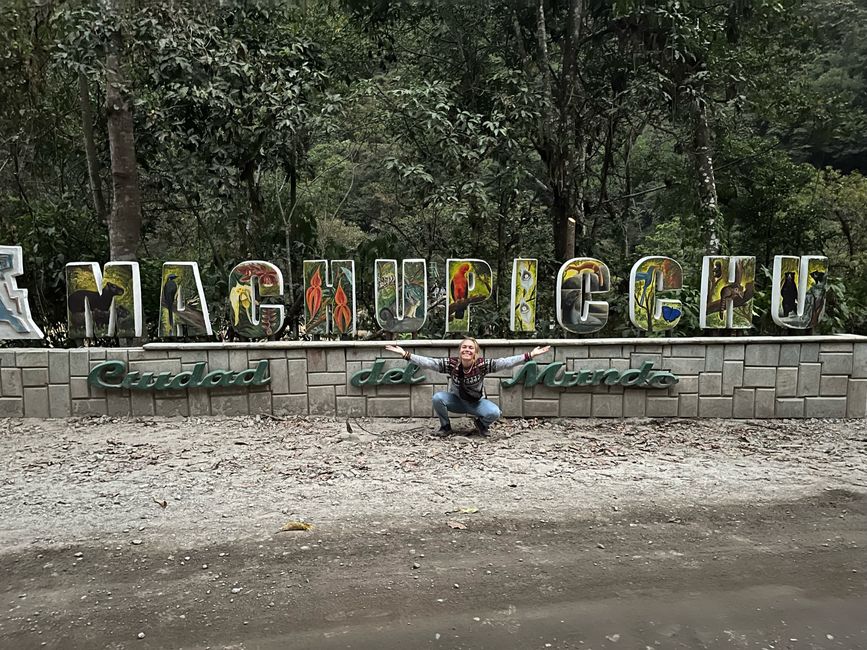
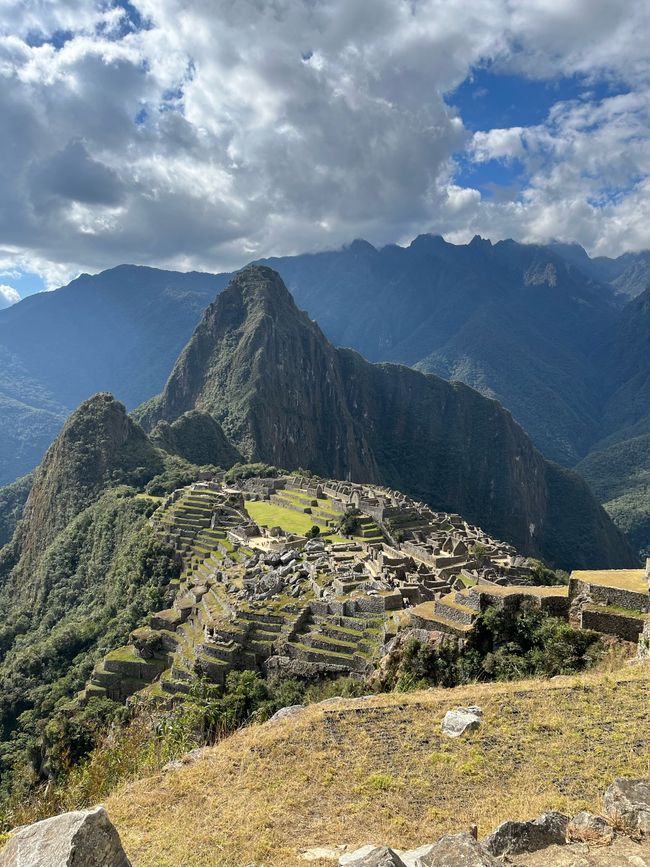
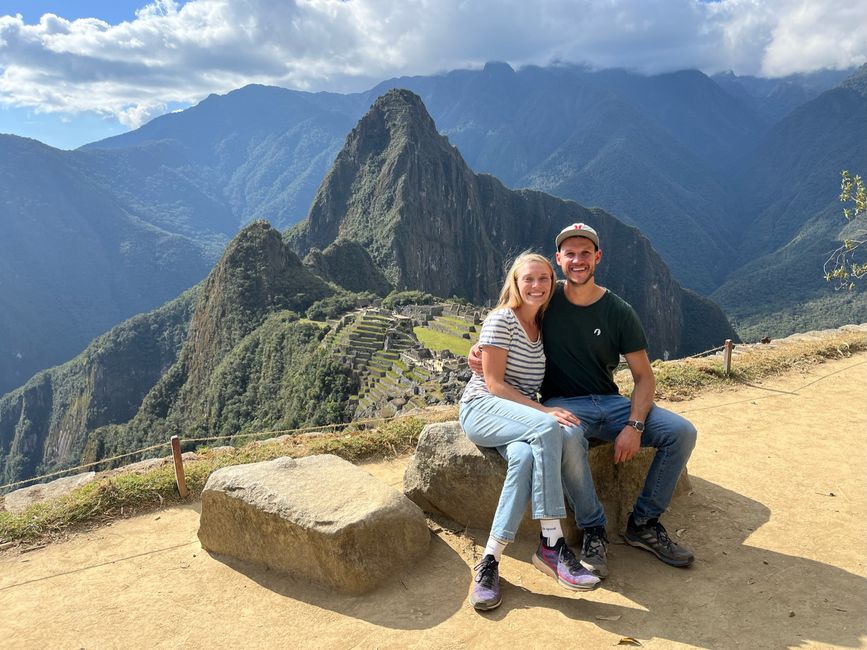
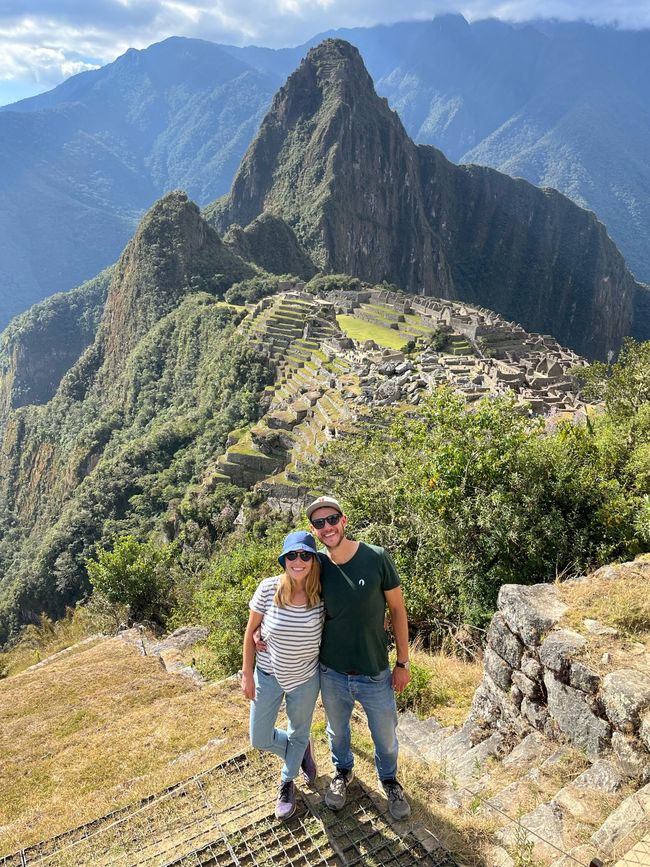
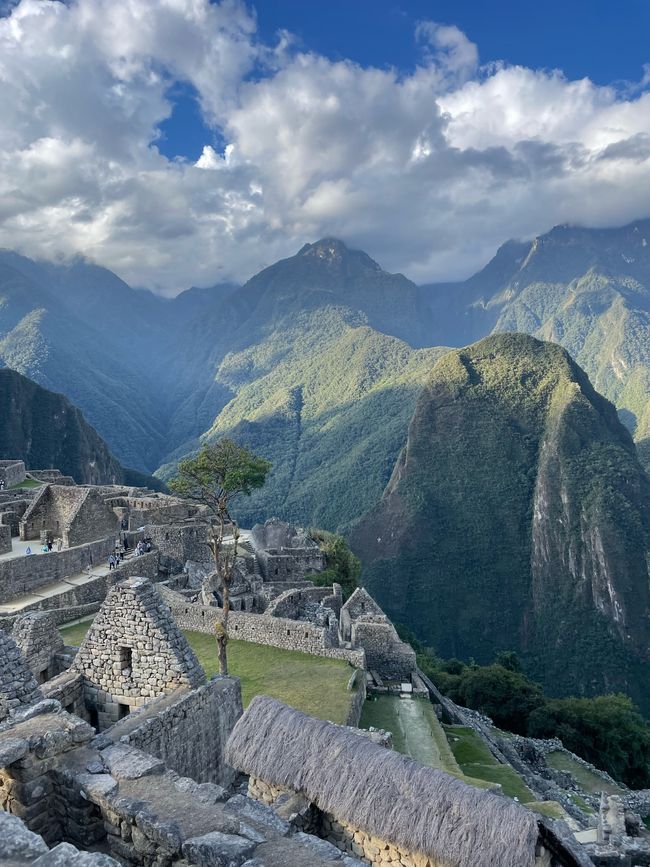
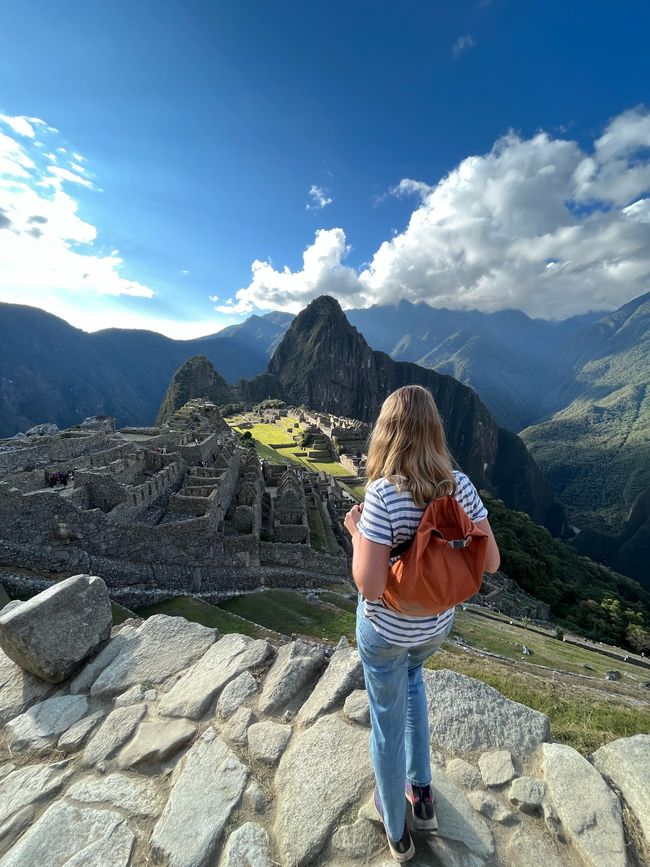
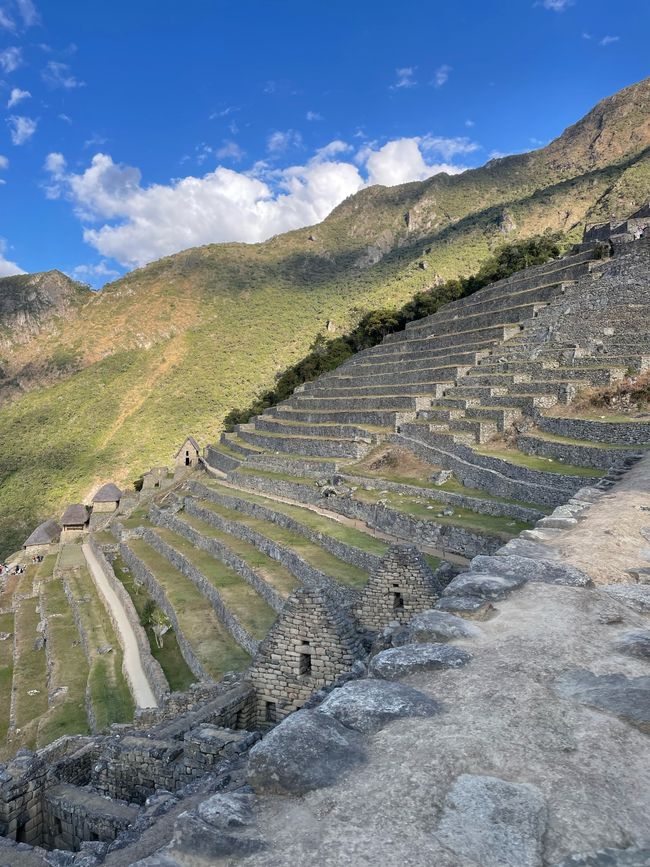
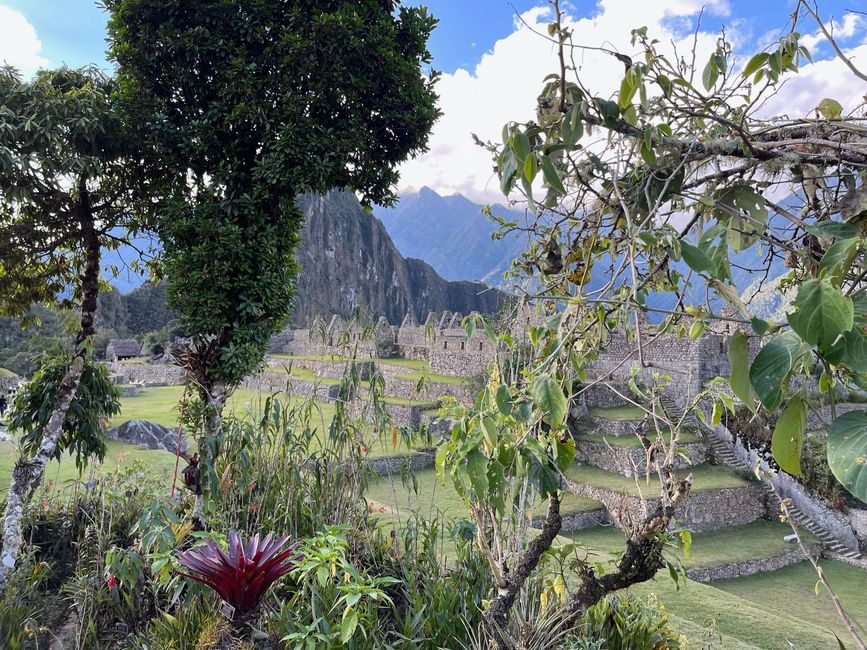
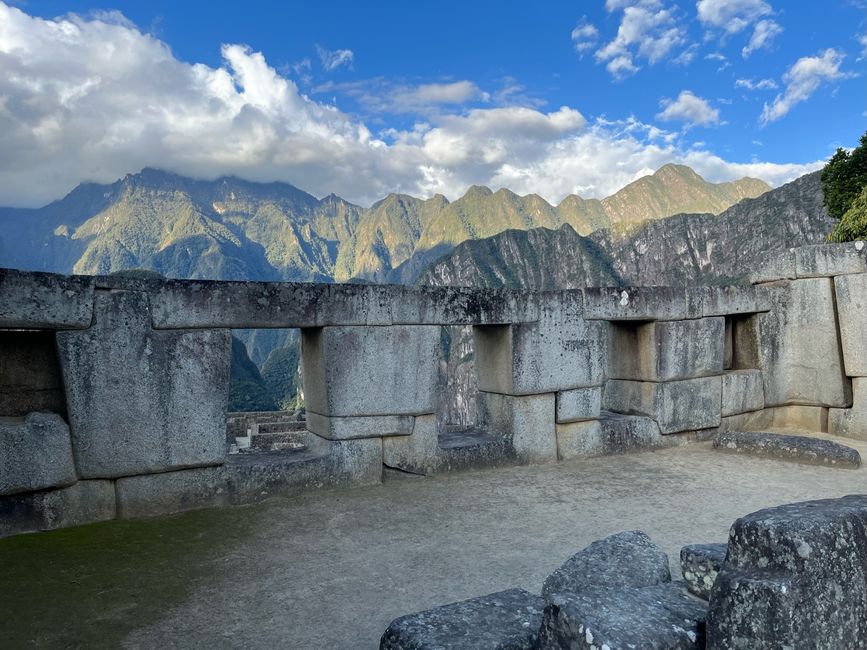
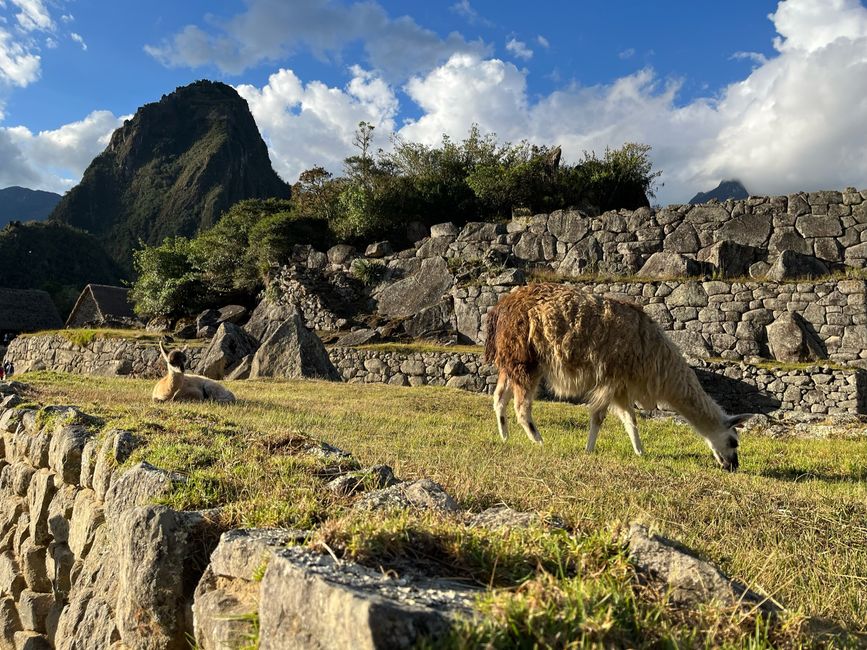
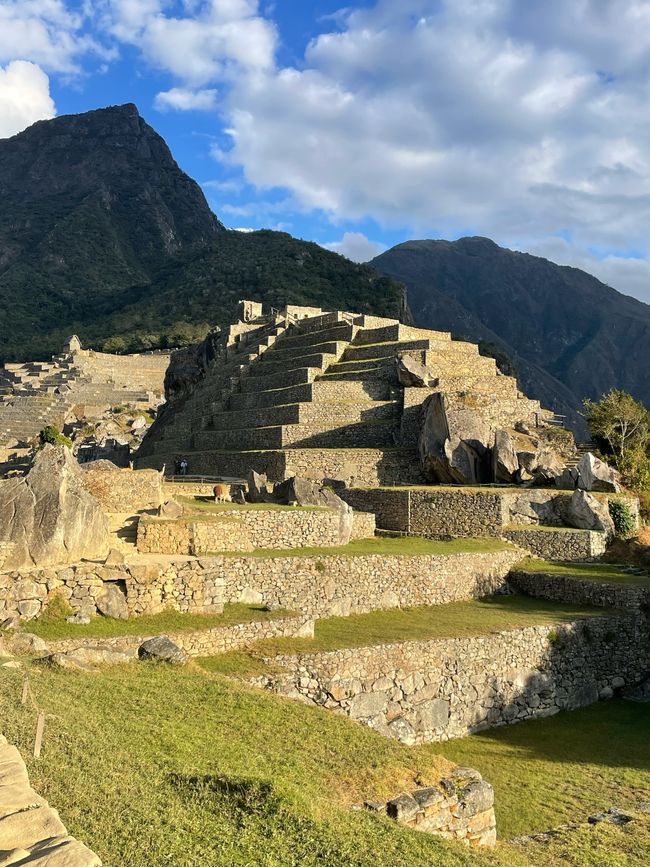
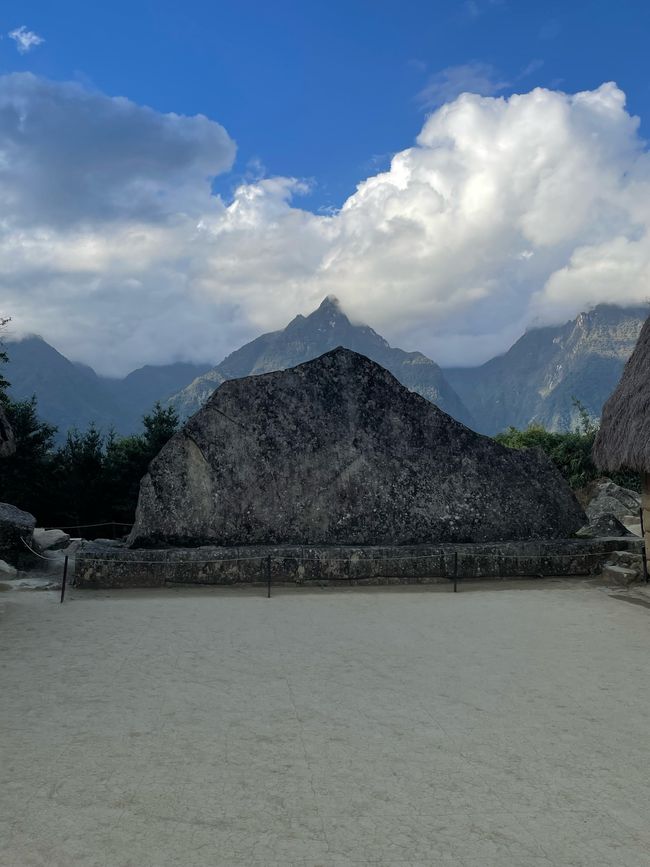
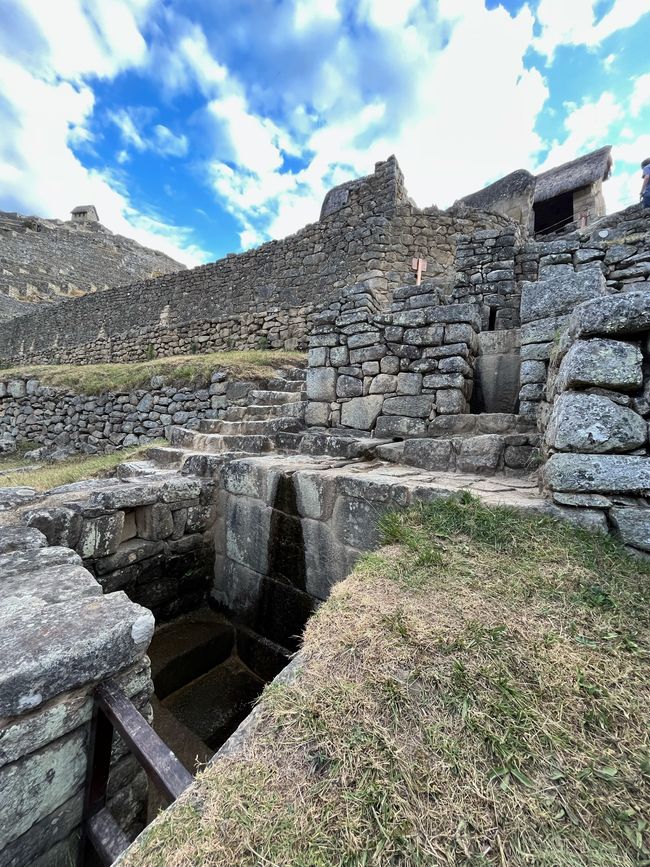
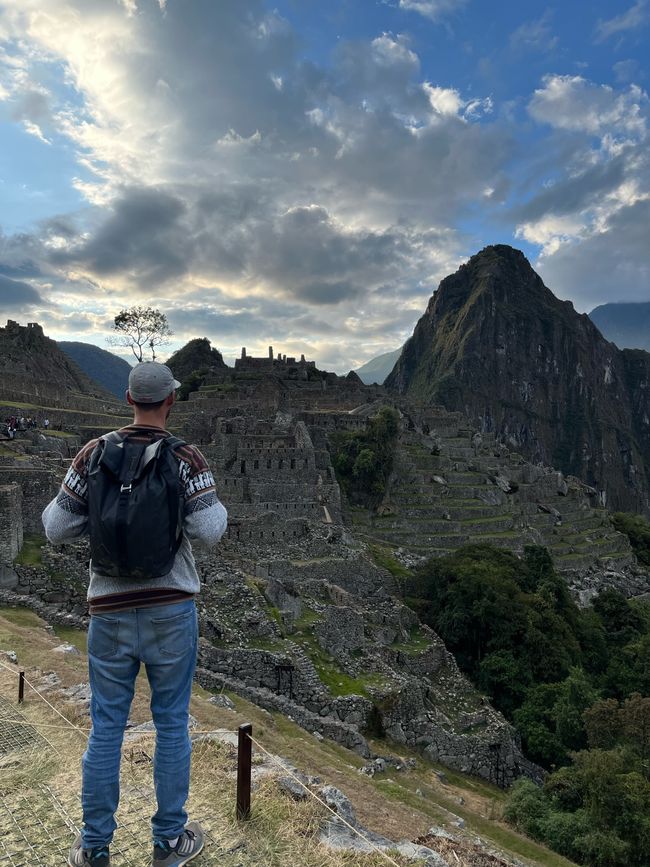
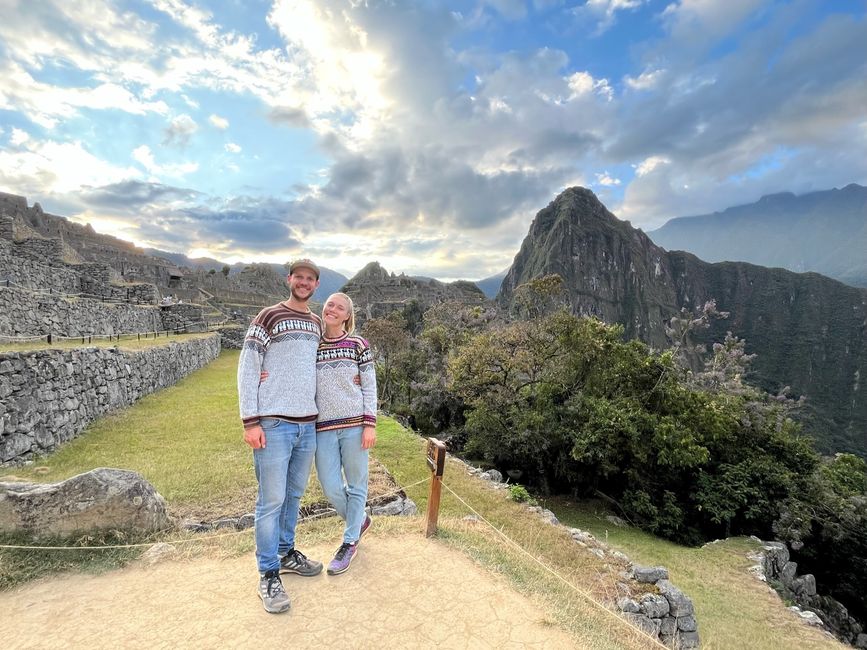
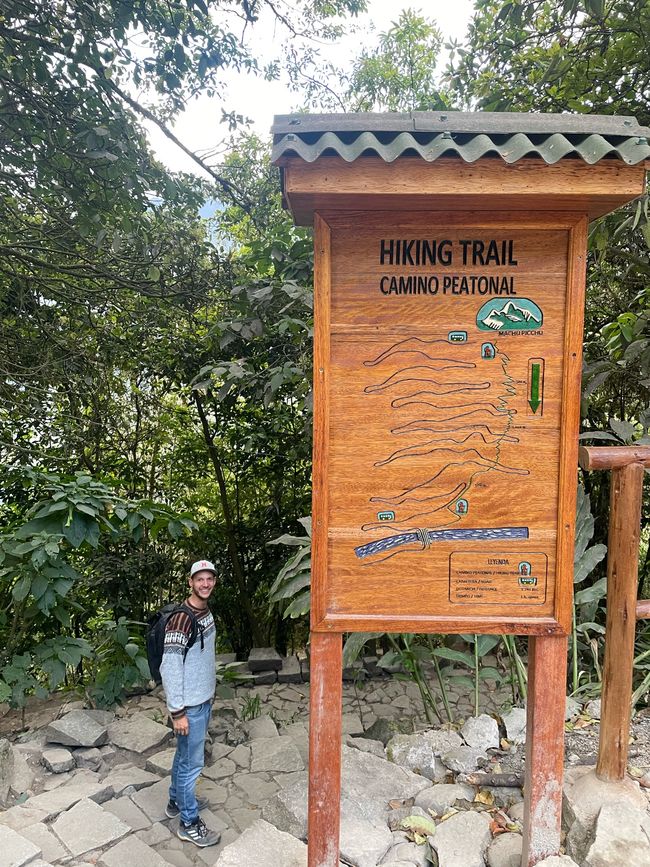
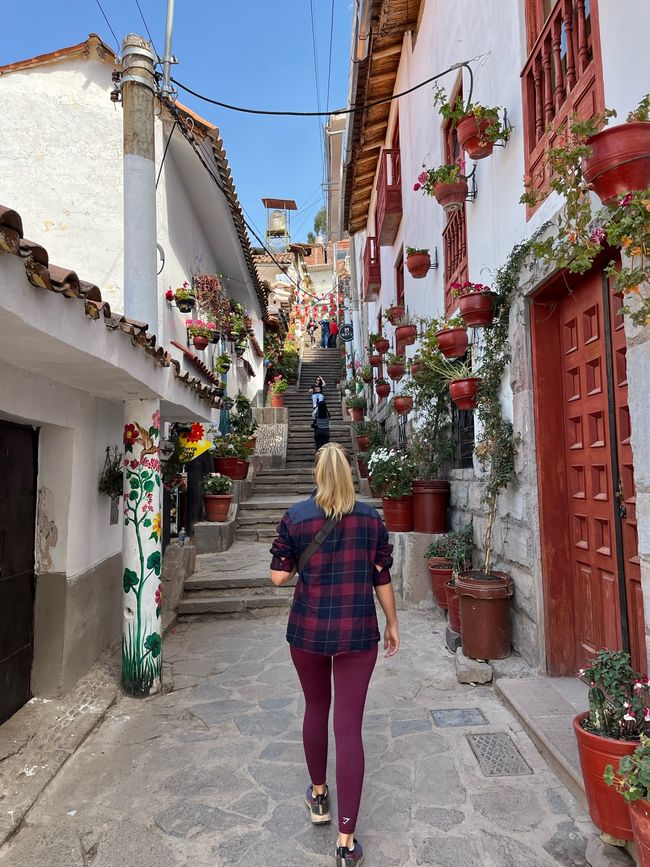
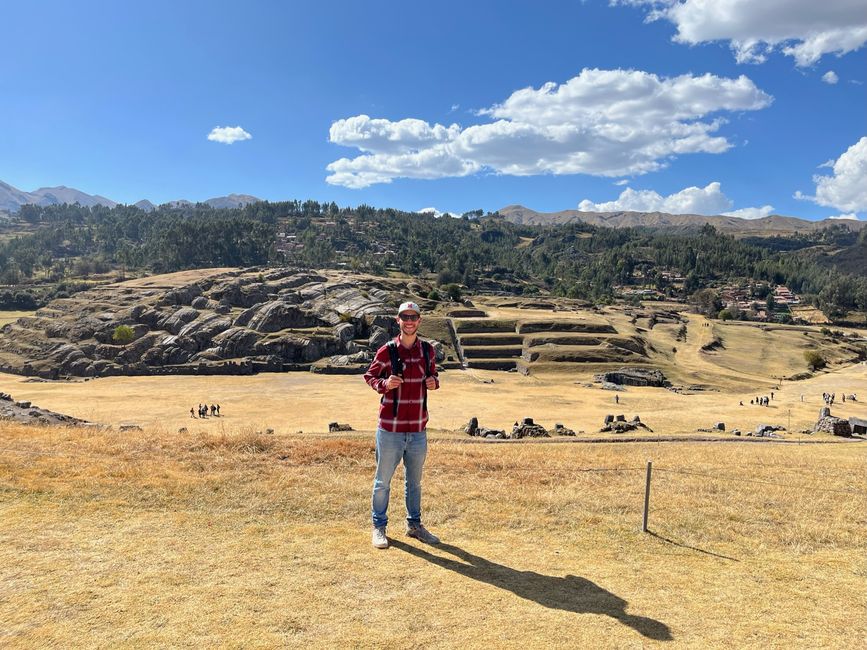
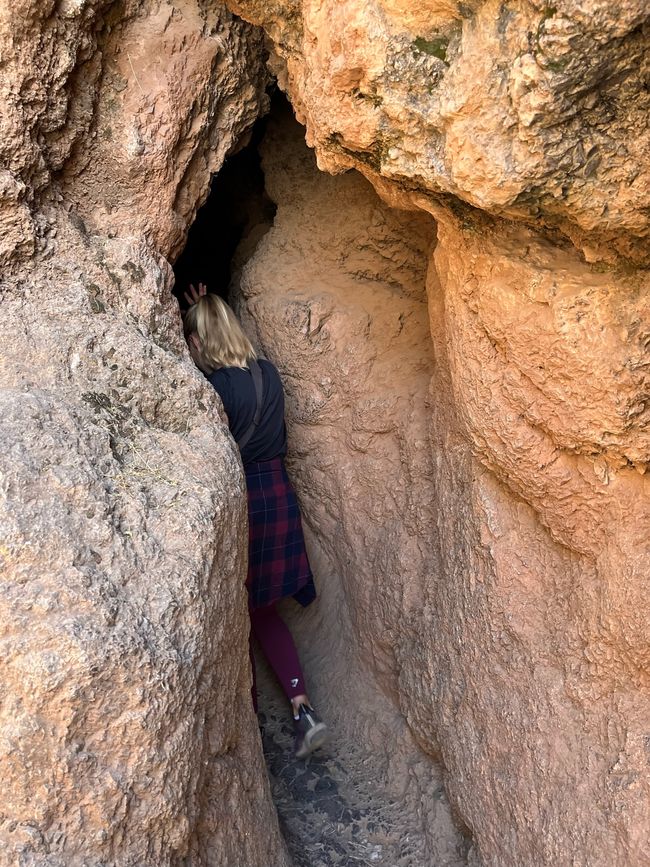
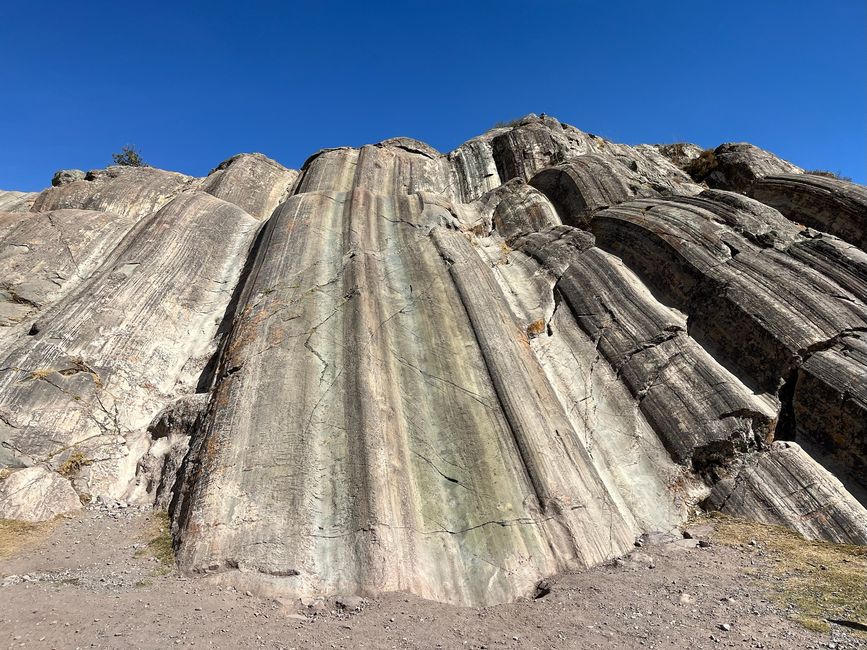
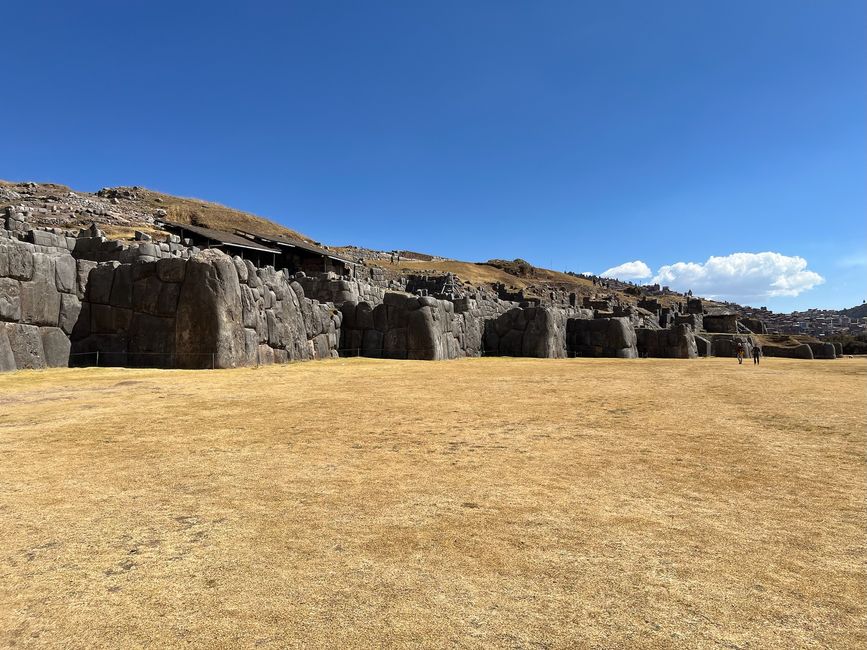
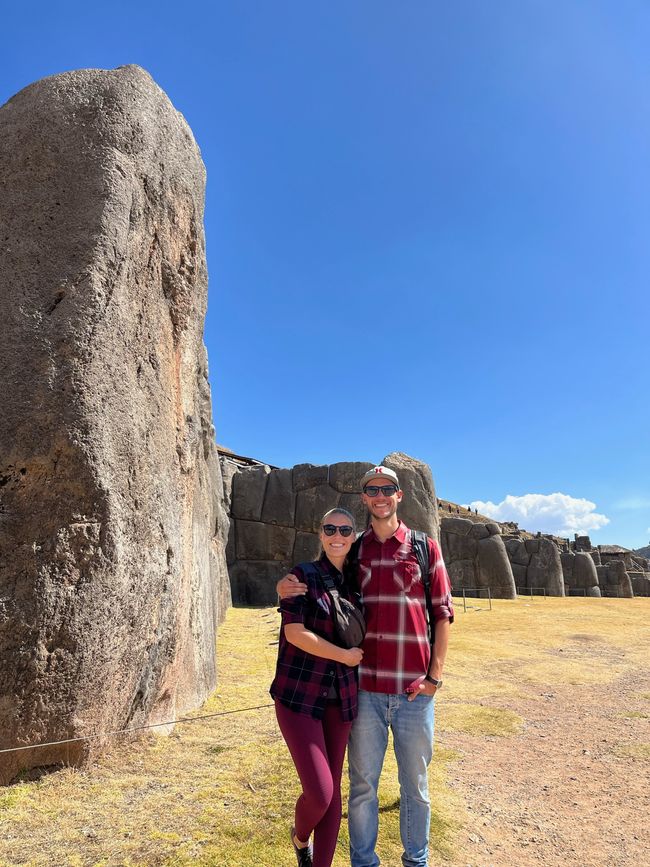
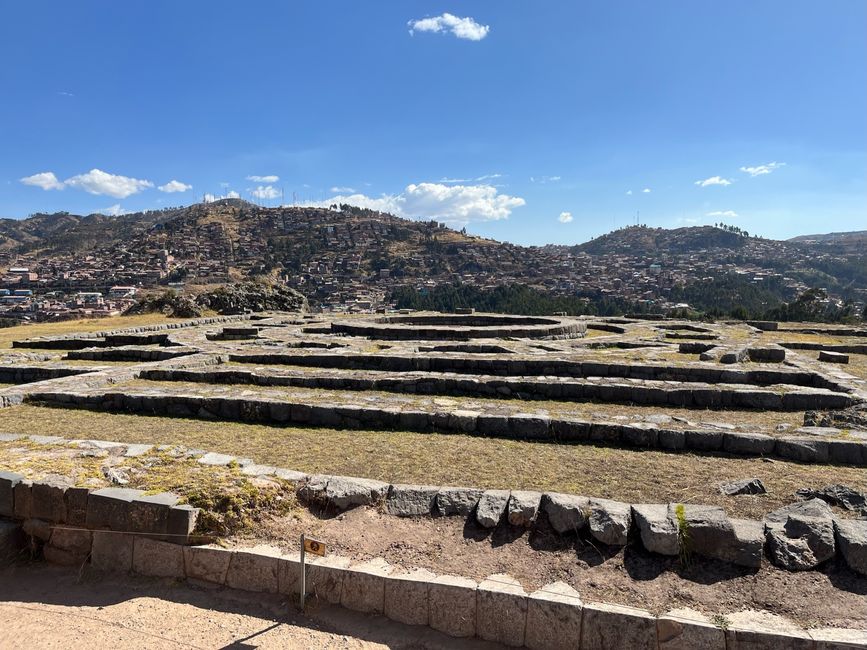
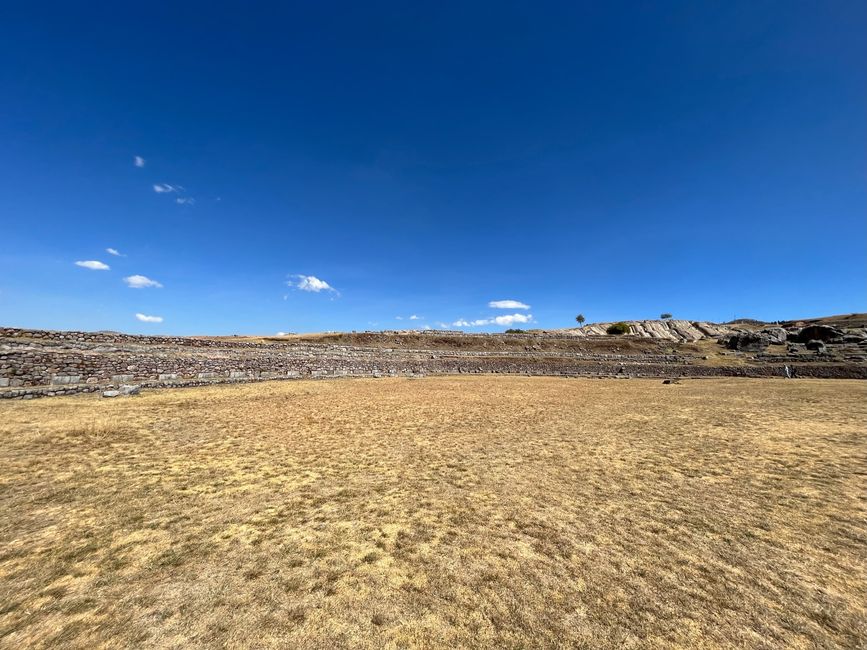
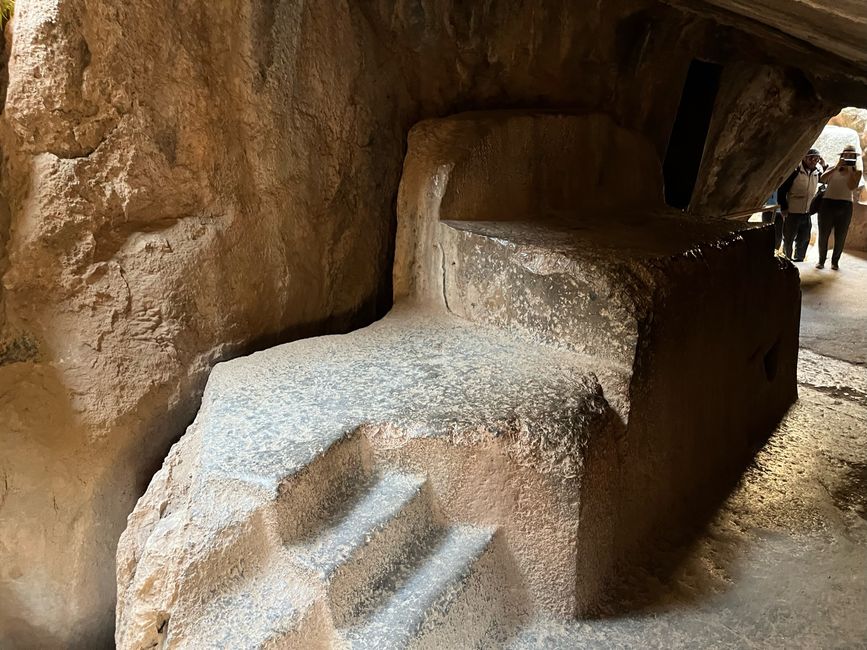
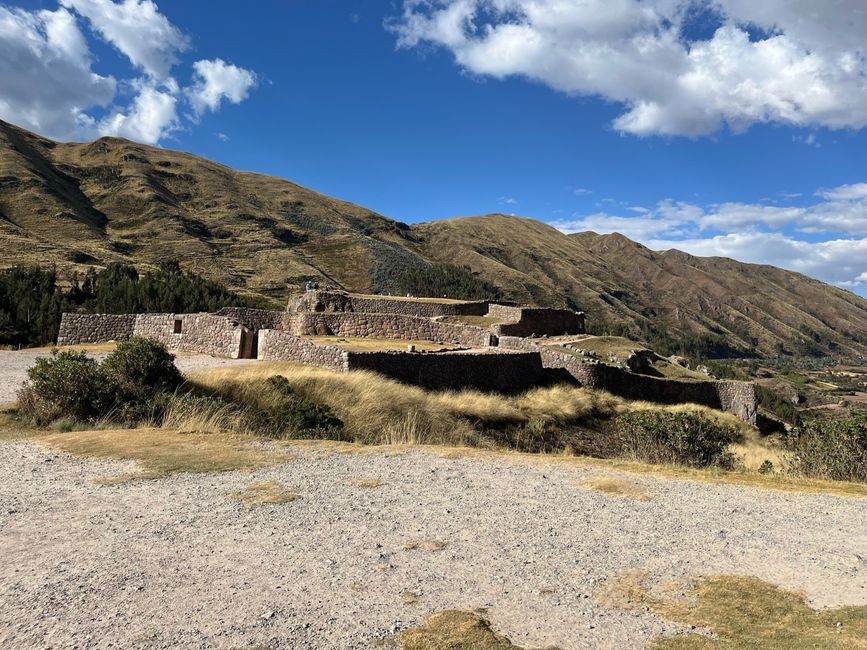
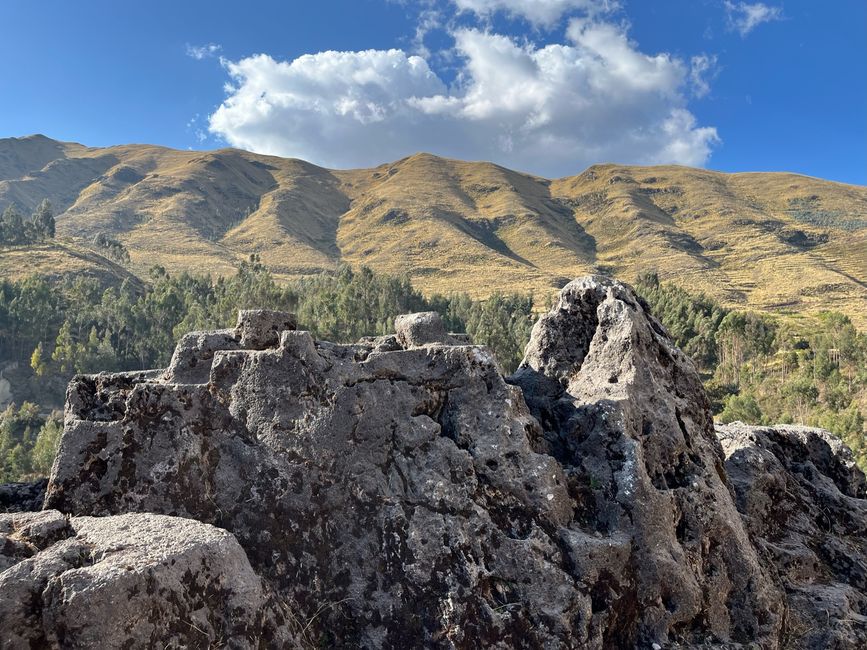
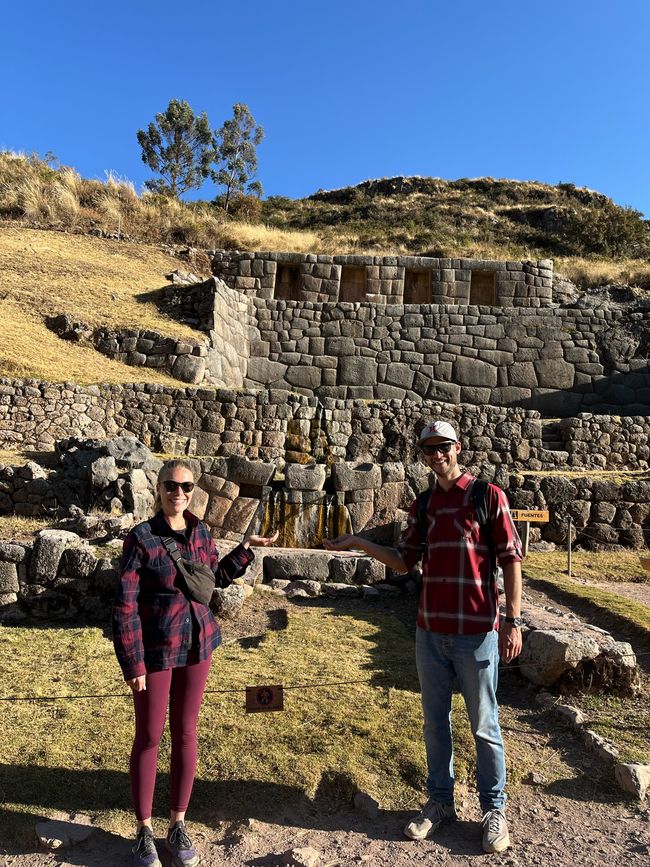
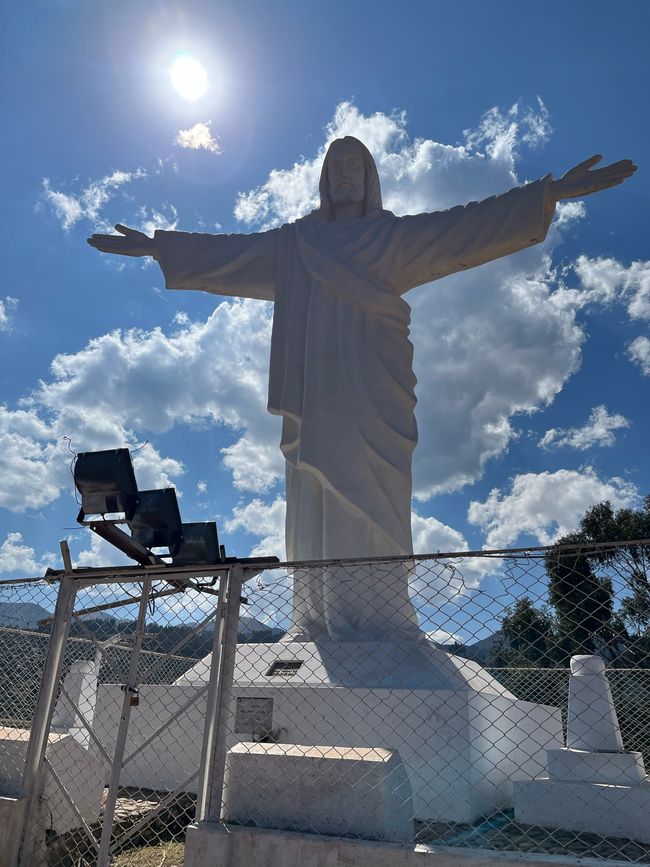
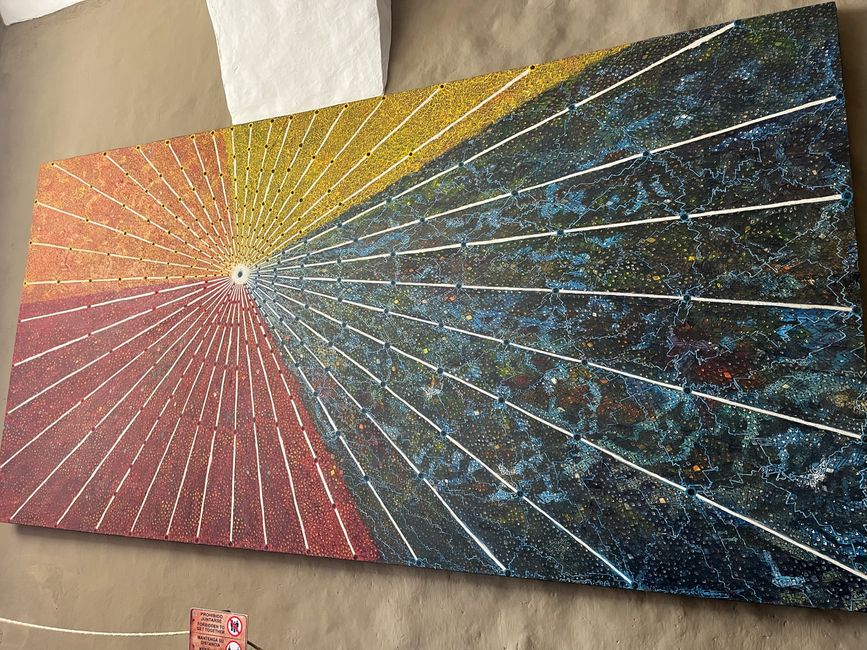
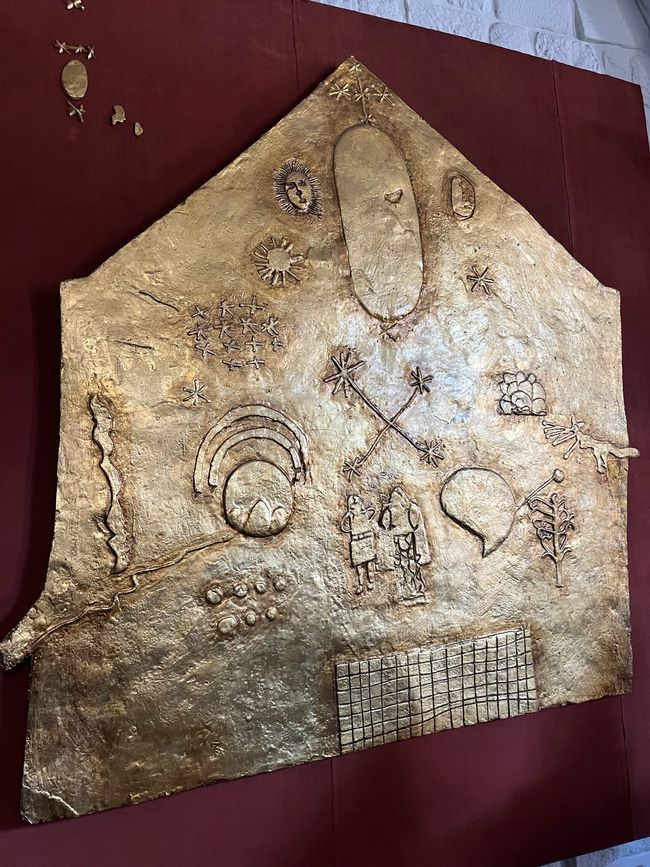
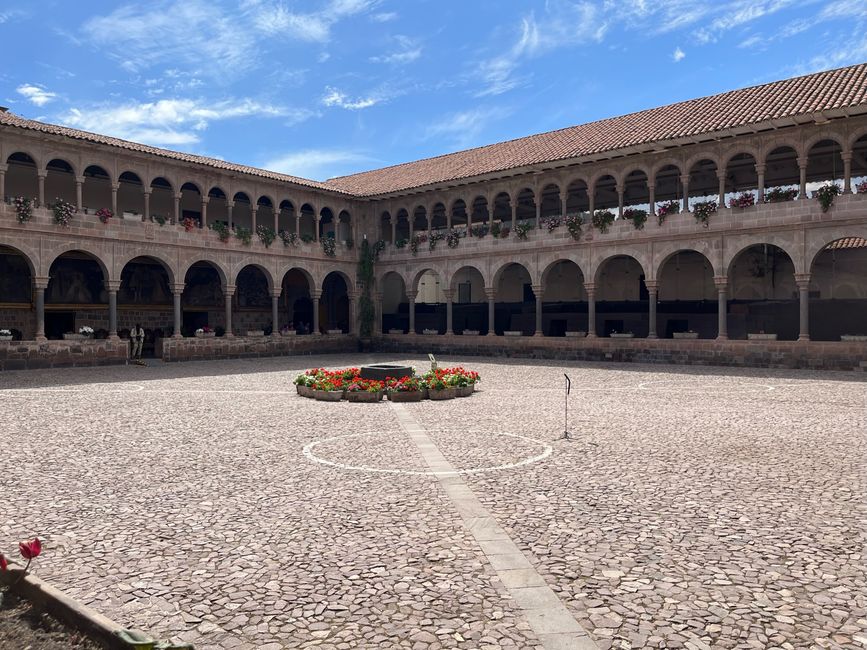
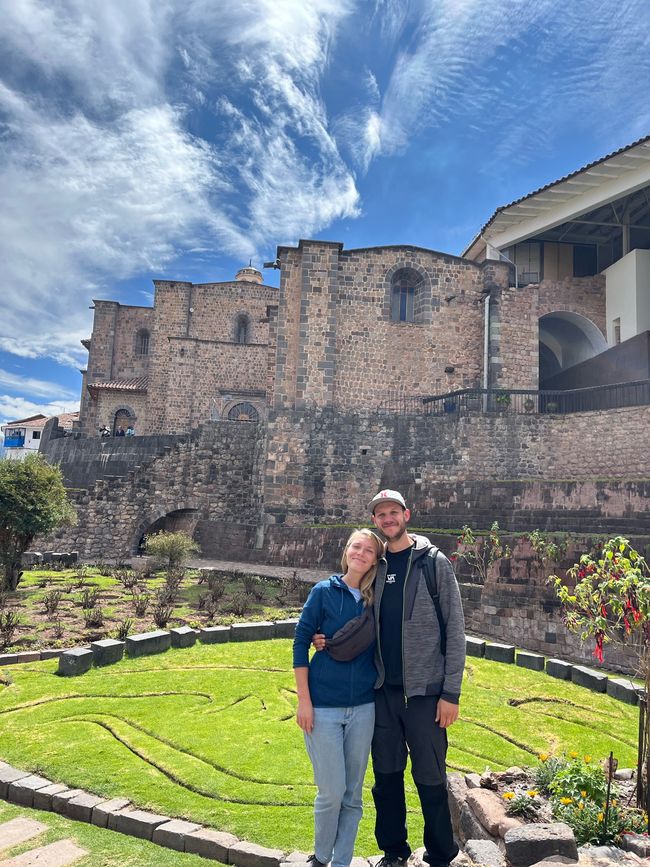
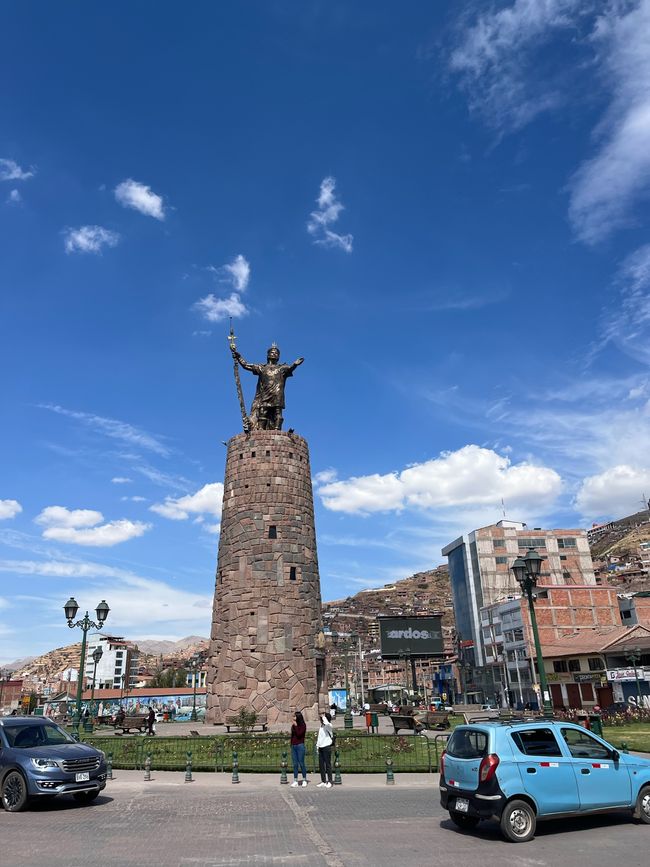
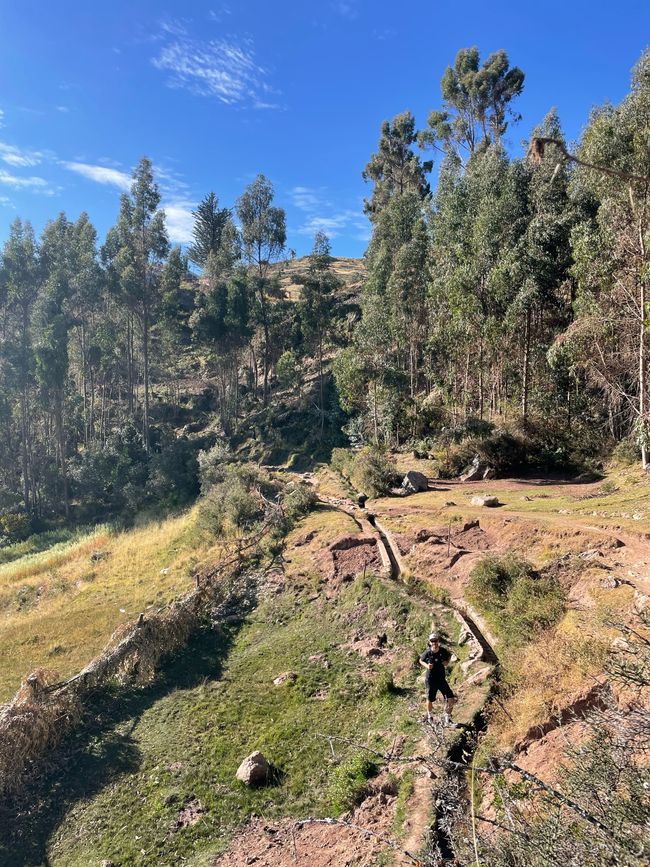
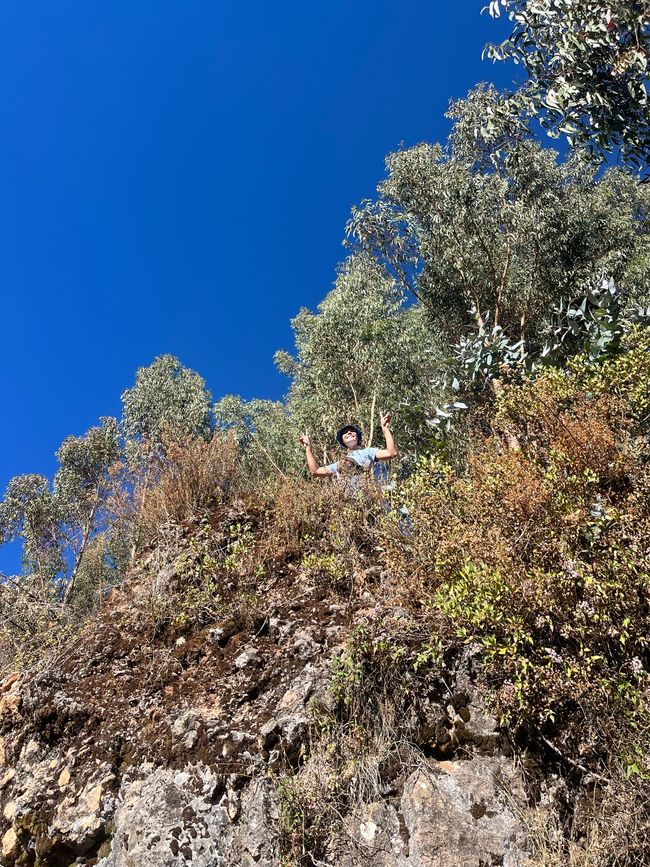
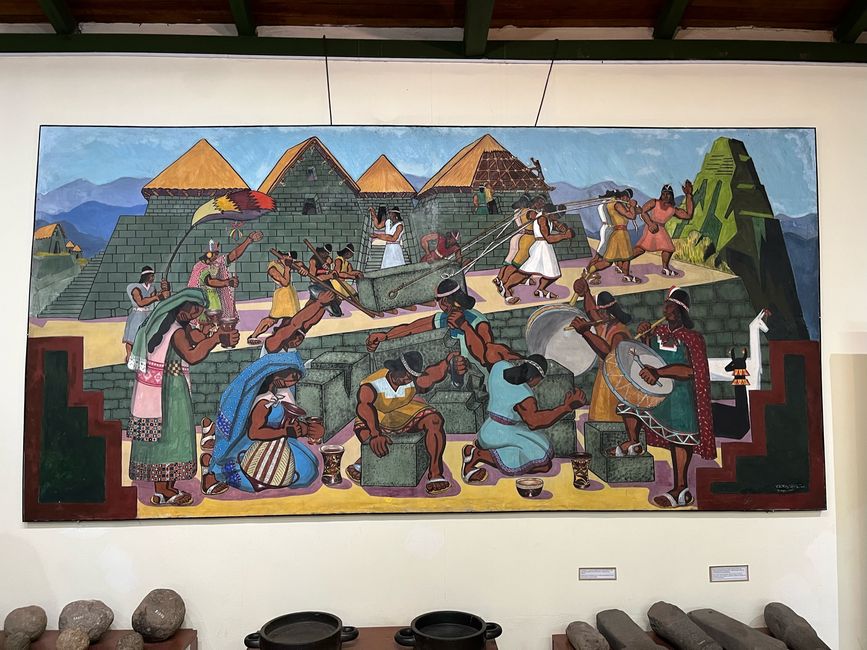
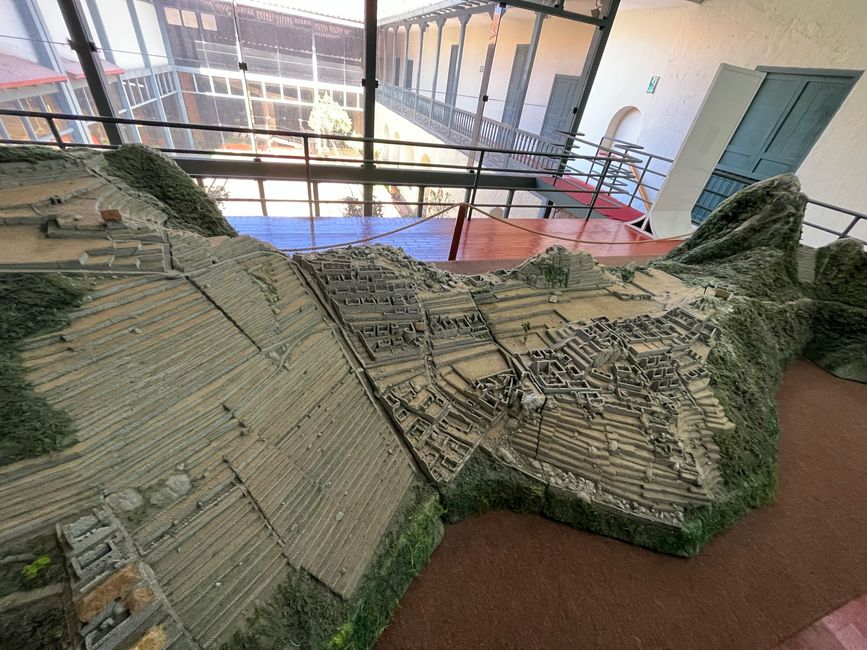
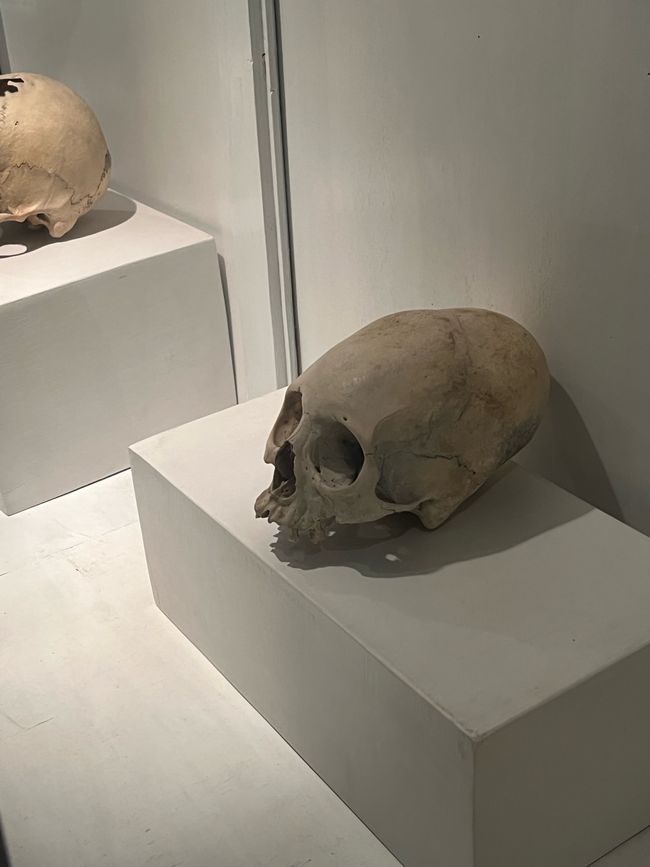
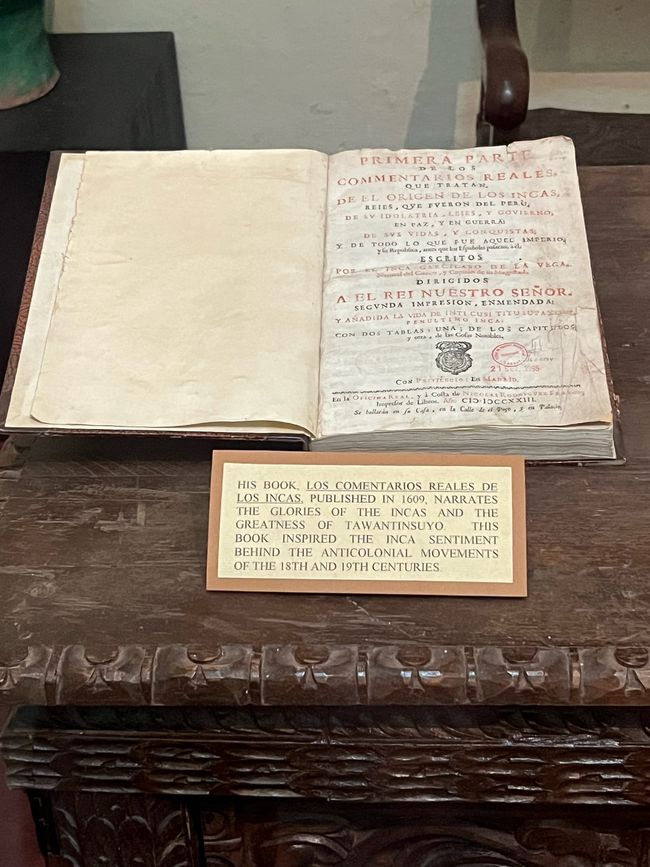
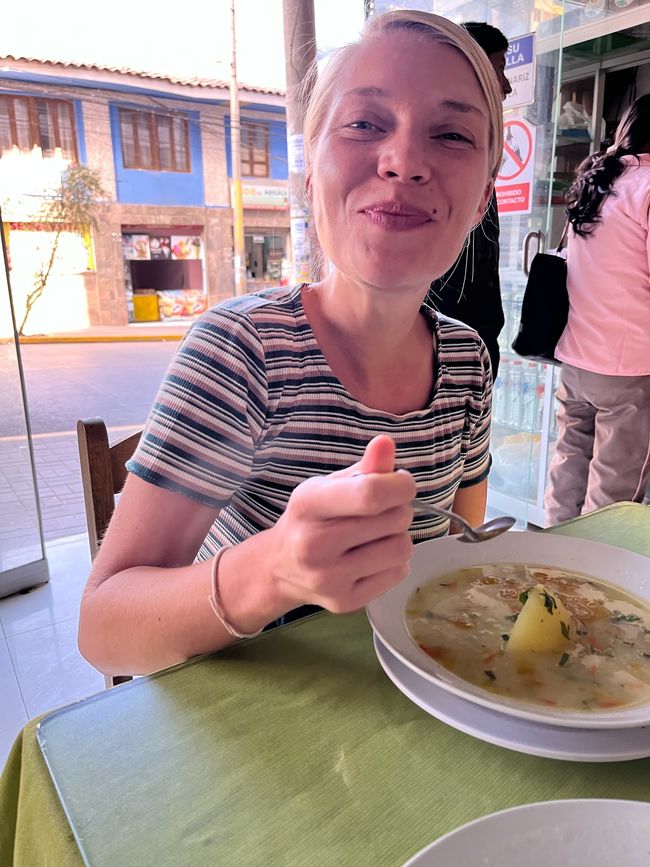
Alabapin si iwe iroyin
After a mostly pleasant journey - especially for Jana, who slept very well thanks to Vomex and her small stature, for Philip the seats were a bit short - we arrived in Cusco in the morning. We instantly liked the city, it is surrounded by hills and creeps up the slopes - there are a total of 700,000 inhabitants! The narrow streets are super tight, cars can hardly pass through, there are cobblestones everywhere and old Inca walls. And if we thought Valparaíso was steep and exhausting, we were proven wrong here at 3400m. Additionally, everything here was decorated with flags to celebrate the "Día de Cusco" and "Día de Perú", which take place at the end of July. On the first day, we walked around the beautiful Plaza de Armas and the souvenir market until Jana started feeling nauseous and got stomachaches again.
On the next day, we signed up for another Free Walking Tour, which was super interesting. Unfortunately, Jana had to leave halfway and go back to the hotel. She spent the next two days mainly in bed, so Philip explored the city on his own. Cusco was the capital of the Inca Empire, which stretched from southern Colombia through Ecuador, Peru and Bolivia to northern Chile and Argentina. Therefore, there are many important places and well-preserved Inca buildings in Cusco. Furthermore, Cusco is full of beautiful restaurants, cafes, souvenir shops, and squares - so Philip wasn't bored 😉 The shape of the city was meticulously planned by the Incas using water channels, it was supposed to resemble a Puma - the sacred animal of the present and the earth. After Jana started feeling better, we attended one of the street festivals that regularly take place here in the evenings. All school classes were dressed up and performed various traditional dances.
With perfect timing, Jana was fully recovered on Wednesday, which was the day we had booked our tickets for Machu Picchu well in advance. Hallelujah, otherwise that would have been really unpleasant 😅 In the morning, we took a mini-bus to the train station in Ollantaytambo, from where the touristy train to the village of Machu Picchu departed. The train was really nice and during the journey, a very cheesy love drama, which allegedly took place during the Inca era in Machu Picchu, was performed. Nonetheless, we had a nice journey, the landscape we passed through was amazing, as we were gradually entering the rainforest. From the town of "Aguas Calientes" - which means "Hot Waters" in English, due to the warm springs here thanks to the now extinct volcanoes - we took a bus with our guide, whom we had hired along the way, up to the famous Inca site. Machu Picchu is in Quechua, which means "Old Mountain" and is located at 2400m. The bus zigzagged up the steep serpentines. Machu Picchu served as a summer residence for the Incas, as it had a more pleasant climate than Cusco and offers truly breathtaking views. However, back then, only the rich and beautiful could afford this luxury, so mainly the royal family and their servants, as well as a few priests, lived here. To this day, it has a mystical aura, the surrounding mountains are impressively high and at the same time look very gentle through the dense rainforest. We could understand why the king chose this place for his vacation home. Additionally, the Incas considered this place very sacred, as in their belief, God sits in all elements of nature and especially in the peaks of the mountains, the "Apus". And there were plenty of them here. Our guide introduced us to the Inca belief, we were supposed to sit down for a short time, close our eyes, and simply pay attention to the wind, the sun, and the sounds around us. Afterwards, we walked through the ruins of the city, where the Incas once again demonstrated their sophisticated architecture. The stones were partly stacked with clay but often directly on top of each other, extremely accurately and so angled that the walls have withstood several earthquakes to this day. Another craft that the Incas mastered and made them successful was agriculture. This was evident from the numerous terraces that we could admire from above and that were irrigated by a specially developed canal system - which still works today! The people were also very skilled in astronomy and worshiped the stars, the moon, lightning, the rainbow, and, above all, the sun. So, in Machu Picchu, you can also find a temple dedicated to the sun. Since it was afternoon, the feared crowds of tourists had already been ushered through, and we were almost alone with 3 llamas and a few other tourists. After we said goodbye to our guide, we walked back to Aguas Calientes on foot through the jungle and unfortunately got bitten by mosquitoes - we were no longer used to mosquitoes 😅 Then we took the train back, including the happy ending of the love drama, and the mini-bus back to Cusco, where we fell into bed tired and happy.
The next day, we wanted to explore the Inca sites in Cusco ourselves. At the entrance to the National Park, we met Annel, a young tourist guide who could explain EVERYTHING to us. She had not only completed the obligatory 3 years of tourism but also studied anthropology for 5 years and was a walking encyclopedia. First, we visited Sacsayhuaman, a huge complex that also represents the head of the Puma of Cusco. It was a large temple built so that all subjects of the Inca from various peoples had enough space to worship the Inca gods as well as their own individual idols. The original temple had become too small after the Inca Empire continued to grow. First, we walked through an underground tunnel, of which there is probably a whole network that enabled the Incas to transport goods from the coast to Cusco. However, since it is not known exactly which tunnel leads where, and Peruvian researchers do not have the necessary technology, most paths remain undiscovered. The tunnel was very dark despite its short length, so we had to feel our way forward, which made us realize how difficult it is to navigate this tunnel system without a plan. The reason why there are hardly any or no foreign researchers here, who would have the necessary financial and technical means, is due to the past. For example, Yale University took over 2000 relics from Machu Picchu for research purposes many years ago and has not returned them to this day. Since then, the Peruvian government has been cautious and prefers to do its own research, even if that means they are not making good progress. Annel also explained that the legendary Inca treasure, which appears in some adventure films, could also be lying somewhere down there - we may never know. Afterwards, Annel showed us four different buildings and formations dedicated to the great celestial phenomena. First, a large circular area, which used to be flooded with water and reflected the starry sky like a giant mirror at night. Then a rainbow-shaped rock and a zigzag-patterned stone wall, which was inspired by lightning. Finally, a round stone wall, which used to be a high tower and was dedicated to the sun. Together with an accompanying moon temple, which we did not visit, the 5 elements were united again. Annel explained to us that the Incas had a dual way of thinking, everything was congruent and complementary, like the right and left hand, man and woman, moon and sun, with the sun always being considered the most important element. That is why it is considered certain that the Incas worshiped not only 3 but 4 sacred animals. As we had learned before, the snake for the underworld, the puma for the earth, the condor for the sky, and additionally the hummingbird as a messenger to the stars. But other animals were also worshiped, as could be seen from shapes incorporated into the walls. In the past, these were probably decorated with gold and silver, two precious metals of which the Incas had more than enough, and which probably made them very interesting for the Spanish conquistadors. Annel explained to us how the Spaniards defeated the Inca civilization, as Sacsayhuaman was one of the battlefields of the bitter fights. Besides all the interesting history, we also had fun, as we were allowed to slide down a rock that had previously served as entertainment for Inca children.
Next, we visited one of the places where the deceased were mummified. Then, Annel showed us one of the sites where male youths were tested on their skills in, among other things, agriculture and combat. There is a theory that the best ones were sent to Machu Picchu for further training and that only the most successful graduates got the "best" women - who distinguished themselves through their special weaving skills. Later, we learned that there were also much more primitive methods to secure one's chosen wife. For example, one could simply throw a potato, and if it hit the head and the woman fainted, it was considered a quasi-marriage 😄 Lastly, we visited one of the resting places where the merchants would stop to rest and eat on their long journeys. Since the Inca Empire was so vast and yet all peoples worshiped their idols in Saksayhuaman and trade took place between distant areas, such resting places were certainly very popular. There was also a well at this place, from which it is not quite clear exactly where it gets its water from. The nearby river is usually dry. It is therefore believed that the special stone from which the well is built can store water from the rainy season and release it during the dry season. Two sources that emerge from a common source, which represent the only singular God of creation appearing as both the male and the female. In the past, it was believed that if a couple without children drank the water, the woman with one hand and the man with the other, they would be guaranteed a fertile future. To end the day, we went to the impressive "White Christ", which Arab residents had donated to the Cusceños to maintain their favor. It towers above the city, spreading its arms to protect the inhabitants. Afterwards, with a buzzing headache, we went home, discussing the Inca high culture in Spanish for so many hours was quite exhausting 😄
The next day, we met up with Annel again to visit the most important temple of the Incas, the Qorikancha in Cusco. This temple is also dedicated to the 5 heavenly elements, with the main focus on the sun, which is why it is also called the Sun Temple. After the Spaniards arrived in Cajamarca in northern Peru in 1532 and captured the Inca king Atahualpa, they later executed him. This marked the beginning of the decline of the Inca Empire, and the Spaniards tried to establish the Christian faith. That is why you can see throughout Cusco, and also at the Sun Temple, that the colonial buildings were simply placed on top of the Inca walls. Therefore, we couldn't avoid looking at some highly Catholic paintings that were specifically created for the Incas to internalize this religion. The destruction of the Inca state was successful, but the Inca culture has survived to this day.
We spent our last day very relaxed in a museum and then at our newly discovered restaurant, where we ate to our heart's content for only 2 euros among Peruvians. In the afternoon, we embarked on our next long bus journey, next stop for us is the small town of Nasca, where one can observe mysterious lines from the air.
Alabapin si iwe iroyin
Idahun

Awọn ijabọ irin-ajo Perú
